|
Week
ending: 28th
February. Baron's Haugh,
Dalzell
Estate
This week I managed three sun-filled visits to RSPB Barons Haugh.
Monday:
This was a relatively brief affair. I headed for
Marsh Hide, but my first capture was of a diligent
Mistle Thrush working in the field nearest there. I was
disappointed at the high water level
on the Haugh, but not surprised due to the heavy rain in the preceding
days. No problem for the
Moorhen though, the only other bird I saw. While leaving the Hide area
I spotted a pair of Roe
Deer 100m away, below the power line. Minutes later
as I passed the field where I’d seen the
Thrush, it had gone but a pair of Jays had replaced it, as well as a
pair of Jackdaws who
obviously also wanted in on the action. The Mistle Thrush had retreated
into the surrounding trees
but I managed a nice shot of it on its perch.
| Mistle Thrush |
Moorhen |
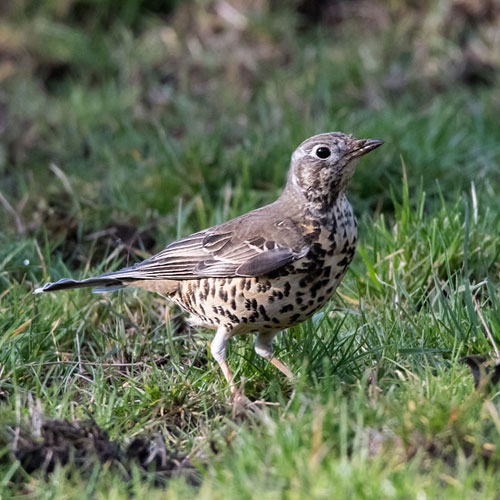 |
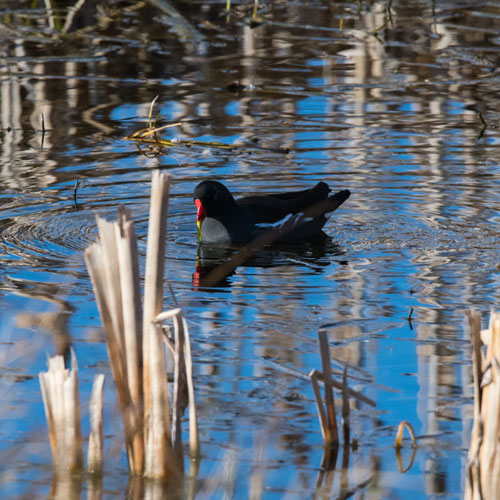 |
| Roe Deer |
Jay |
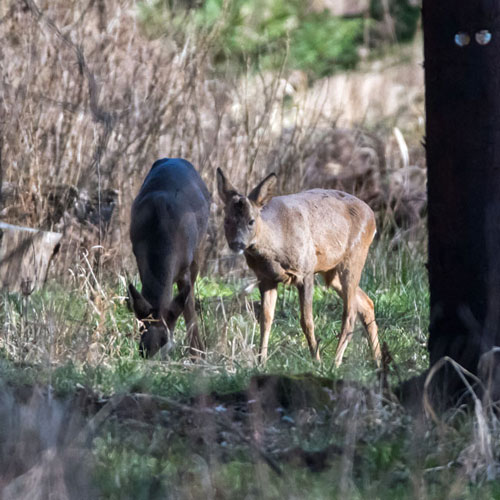 |
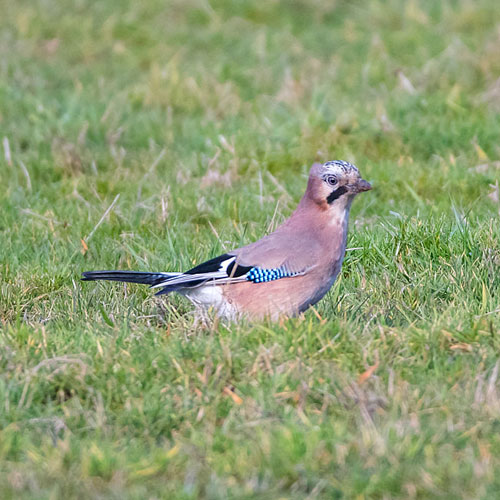 |
| Jackdaw |
Mistle Thrush |
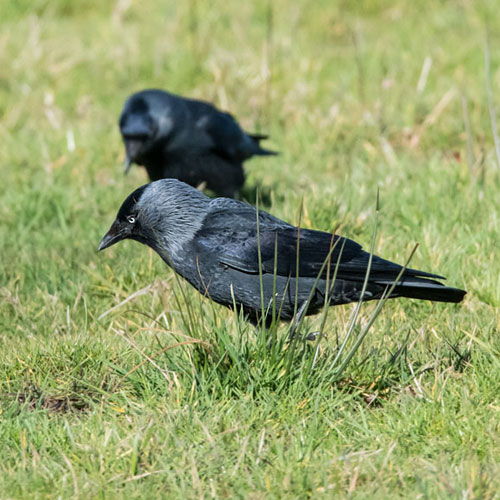 |
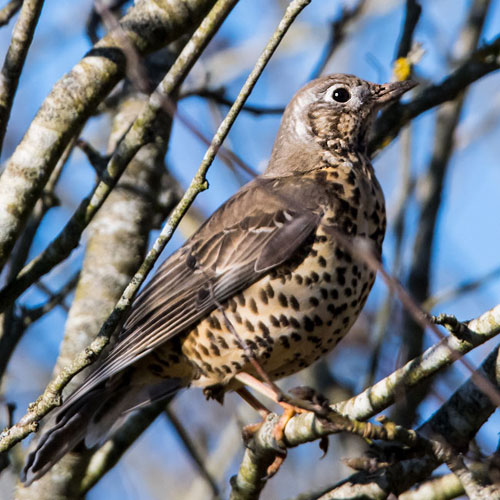 |
A perky wee Robin watched the field for any leftovers.
I moved to the Phoenix Hide where I watched a flock of Lapwings
search in vain for a
landing spot on the flooded Haugh. I did, though see a smart-looking
drake Goldeneye and a
diving Little
Grebe . Next a flock of passing Long-tailed Tits
drew me from the hide to the
bank of the River Clyde where I noticed they had found something nice
to eat, probably
invertebrates. On the far side of the swollen river a pair of Little
Grebes were watching me
carefully. On my way back to the car I snapped a Carrion Crow standing
boldly on a tall stave
surveying the field before it.
| Lapwing |
Goldeneye Drake |
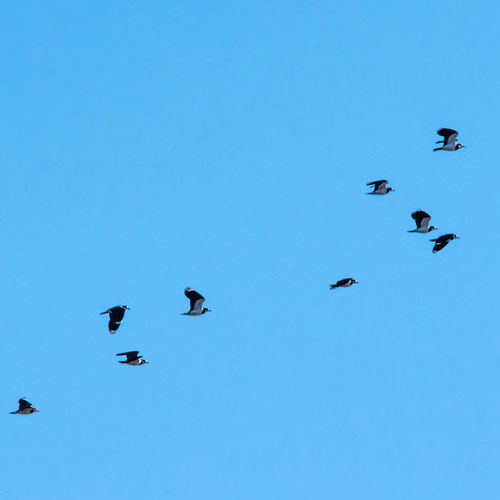 |
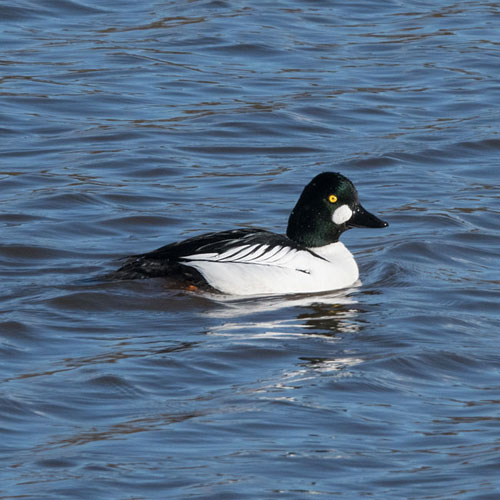 |
| Little |
Grebe |
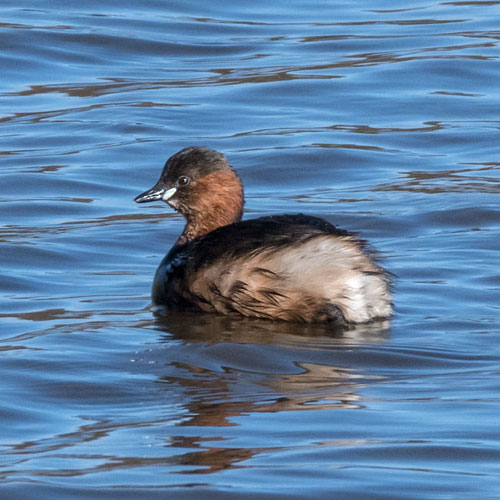 |
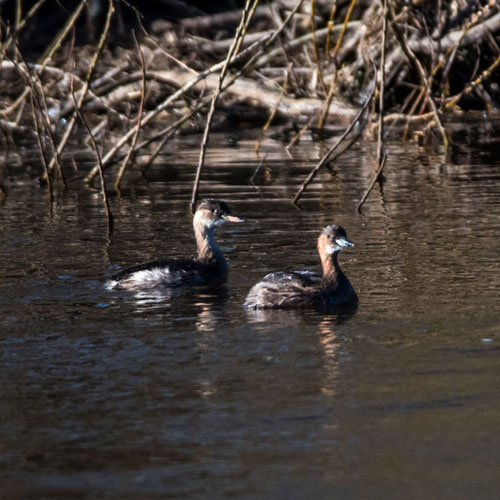 |
| Long-tailed Tit |
Carrion Crow |
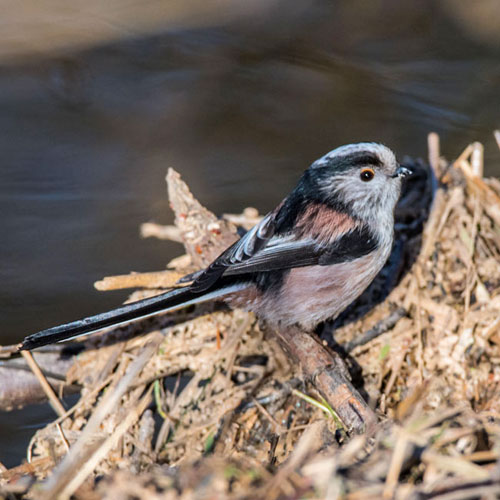 |
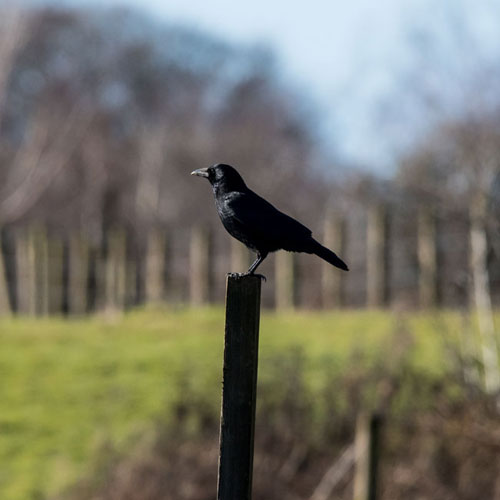 |
Thursday:
I started in Dalzell Estate on what turned out to be the best day of
the week. Near the stables I
found a lovely patch of Snowdrops.
Behind me I was watched by one of the many
Woodpigeons to be found in Dalzell woods. As I walked towards Easter
Braes and down to the
Clyde I got pictures of a Great Tit and a Robin.
| Snowdrops |
Wood Pigeon |
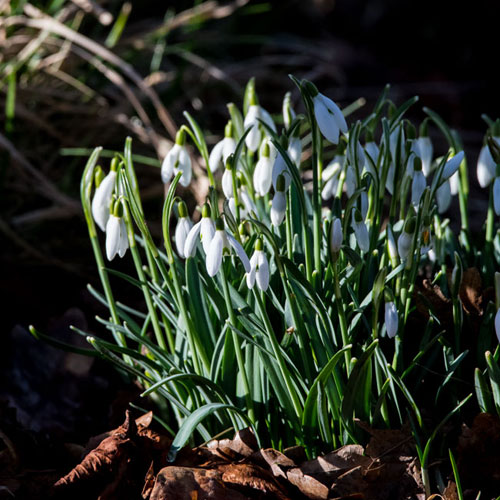 |
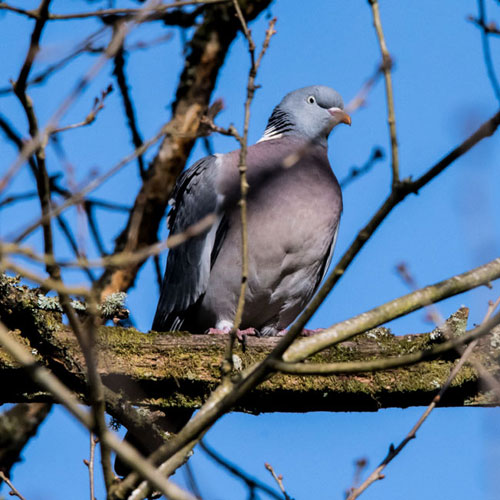 |
| Great Tit |
Robin |
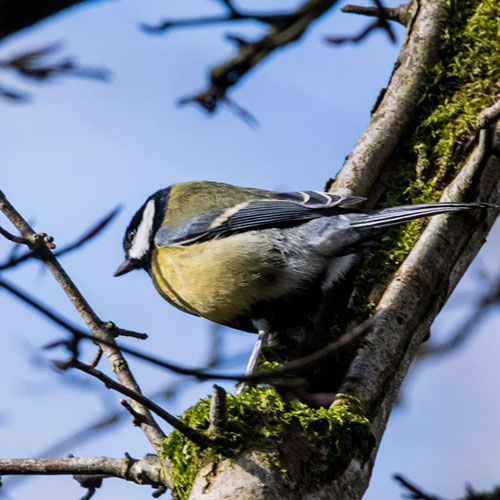 |
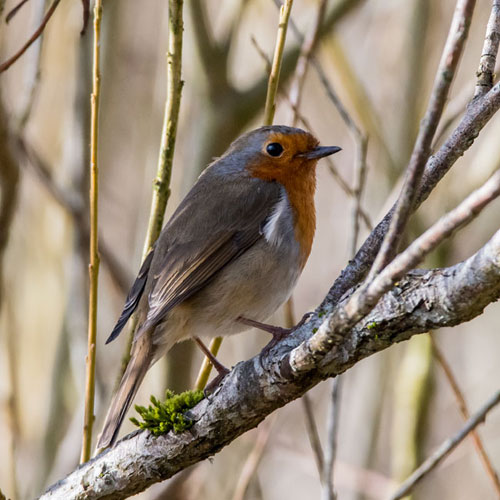 |
On the far side of the river there were a few resting Goosanders.
From the riverside path I found a shy Goldfinch lurking in the
undergrowth, and soon afterwards a
flock of Curlews
passed overhead heading for the Haugh. Moments later they returned,
probably having come to the same conclusion as the Lapwings
I’d seen earlier in the week. I had
a quick look at the Haugh from the Centenary Hide and got a long shot
of some Wigeon.
| Goldfinch |
Curlew |
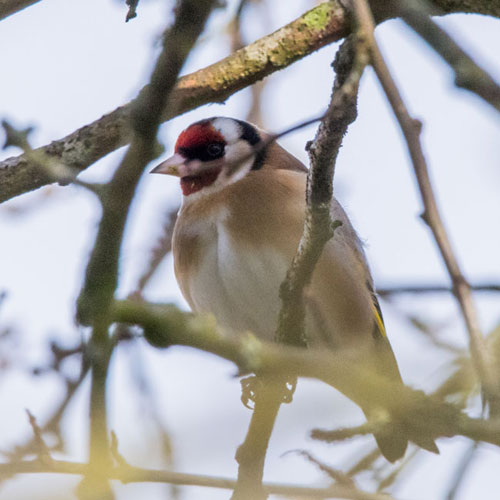 |
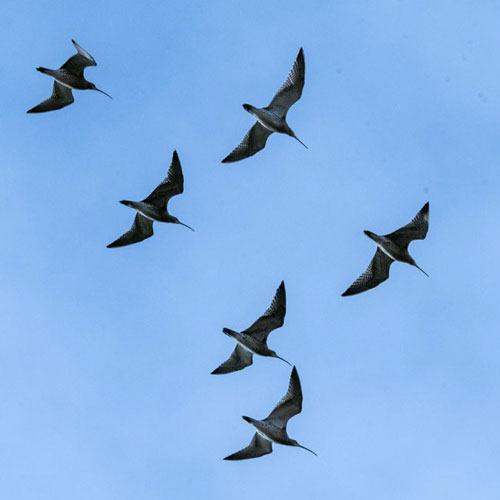 |
| Canada Goose |
Wigeon |
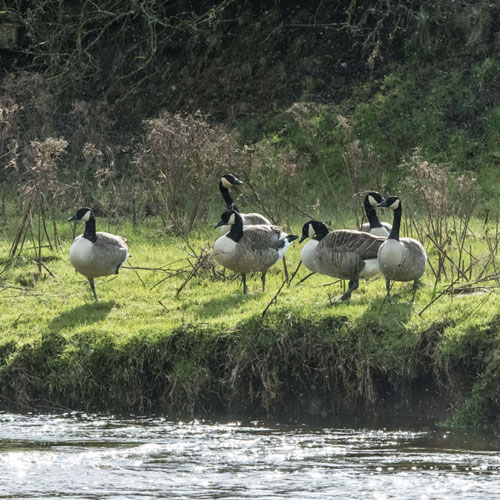 |
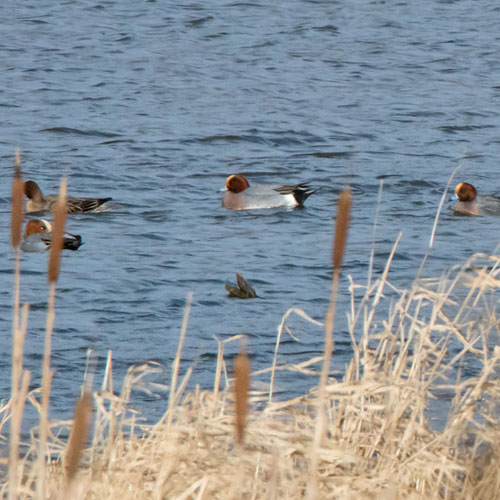 |
Just before I left the hide my view was adorned by a beautiful rainbow.
On my way to the Pheonix Hide I got a great shot from the
path of a Robin singing in the bushes,
and further along the path I came across an exhausted Common Frog. It
ran the risk of being
flattened by a passing cyclist so I encouraged it onto the grass. I
then found a sure sign of Spring
- a blooming Lesser
Celandine . These yellow flowers usually signal the
start of the wild
flower season.
I was impressed by yet more riverside Snowdrops (well, it’s
been a hard winter). Before I turned
away from the river I photographed a pair of cousins, a Blue Tit
hanging on alder fruit, and a Great
Tit that was following a possible mate. Next I was excited to catch a
few shots of a Buzzard
passing over the field that overlooks the river. It was carrying prey
in its blood-stained talons,
probably a Field Vole.
| Snowdrops |
Blue Tit |
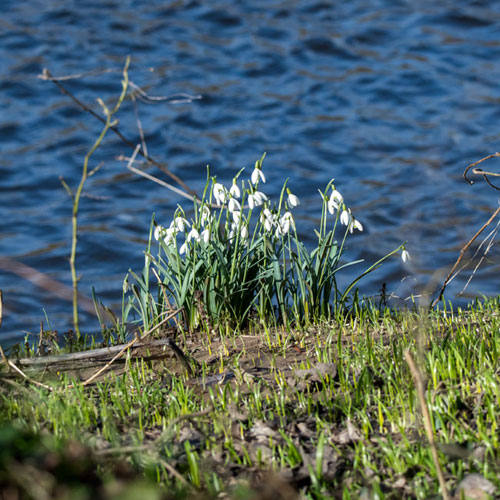 |
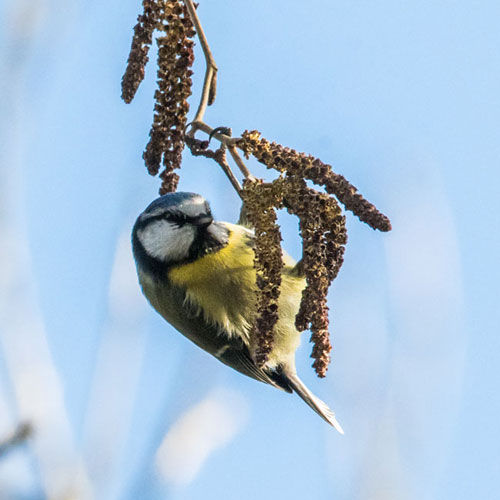 |
| Great Tit |
Buzzard |
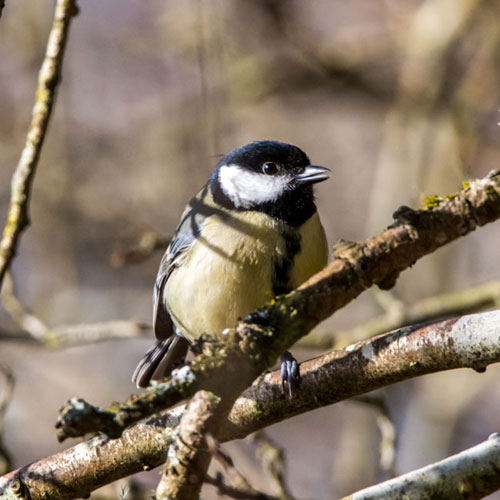 |
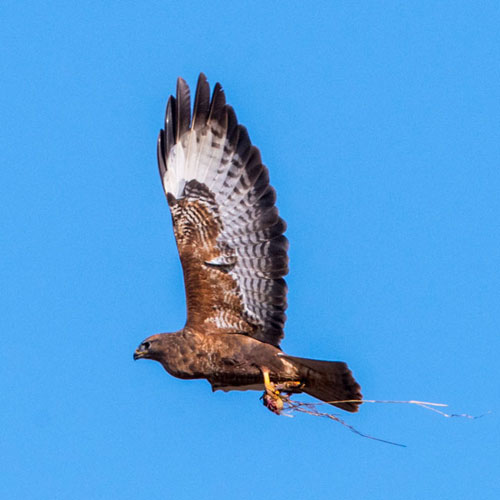 |
At the edge of the next field I got yet another shot of a Robin,
possible the best shot. With the sun
behind me and shining into the bird’s eyes it it was very
accommodating. In the neighbouring field
there was a Grey
Wagtail foraging in muddy pools close to the path. It too had
the sun in
its eyes and I was equally fortunate to get some fine shots. My final
captures of the day were of
another Buzzard being mobbed be Carrion Crows over the same field.
| Robin |
Grey Wagtail |
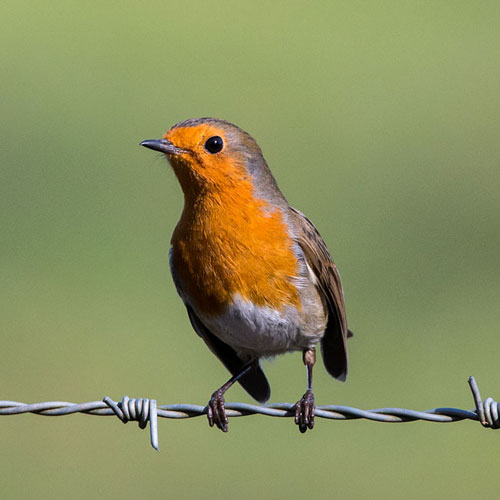 |
 |
Friday:
My final visit of the week to Barons Haugh typified the
nature-watcher’s plight. Following the same
path as the day before, at the same time of day, with the same weather
conditions I managed only
a few sightings. These were a pretty wee Coal Tit in Dalzell Woods, a
female Goosander in the
River Clyde, a distant Grey Heron and a female Goosander flying up the
river. And that was it.
| Coal Tit |
Grey Heron |
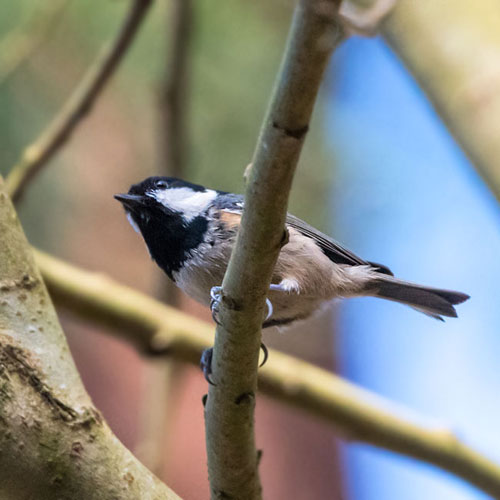 |
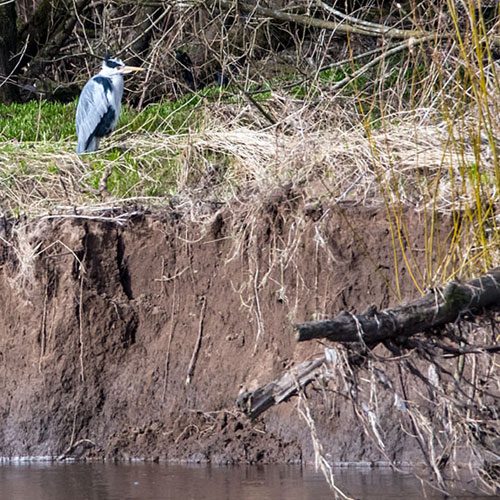 |
Week ending: 21st February 2021: Strathclyde Park
I decided this week to explore various places within Strathclyde
Country Park.
On Tuesday I started at the north end of the Loch. The weather was
rather dull but I still managed
a few nice shots - a hovering Black-headed Gull, a flapping drake
Mallard, a dribbling Canada
Goose and a soaring Common Gull.
| Black-headed Gull |
Drake Mallard |
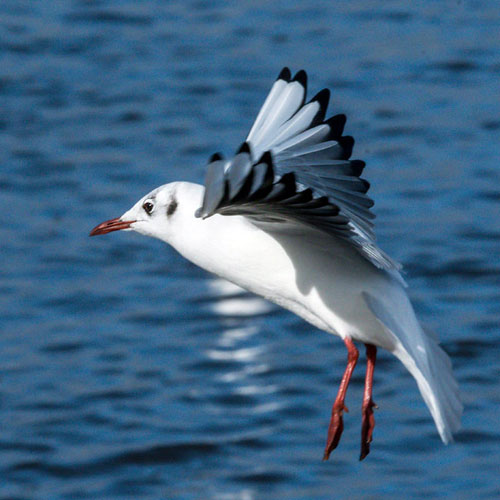 |
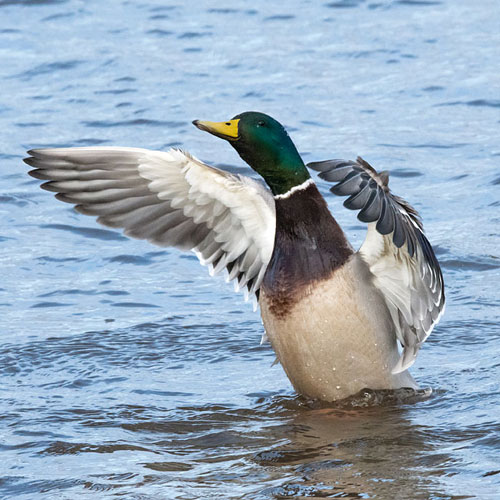 |
| Canada Goose |
Common Gull |
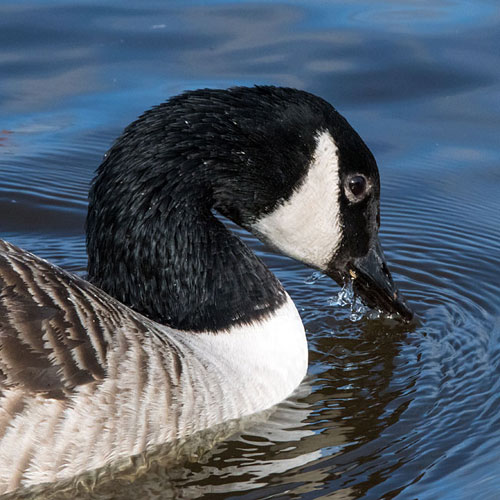 |
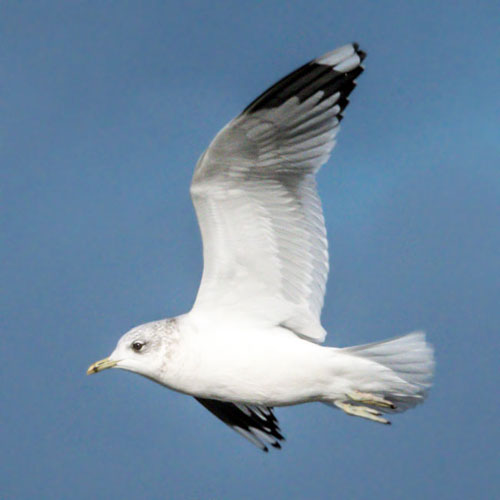 |
The sun came out just as I was training my camera on a drake Goosander .
followed by a
Black-headed Gull passing overhead.
| Drake Goosander |
Black-headed Gull |
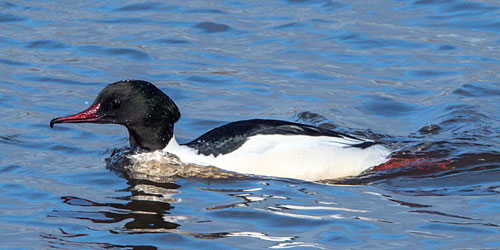 |
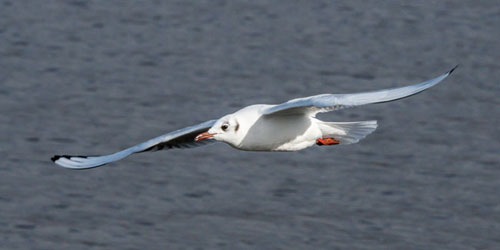 |
On Thursday I started in the woods behind M&D’s Theme
Park where I came across a couple of
fungi. The first was a bracket fungus, called Artist’s
Fungus , that was growing in some
numbers on fallen, mossy-covered logs. Further along the path I
discovered a small, pretty and
delightfully-named Scarlet
Elf Cup. On the verges of the wood Snowdrops were coming to
bloom - sure signs that Spring is on its way. Back at the North end of
the Loch I snapped a
circling Herring Gull. A couple of Coot were feeding in the moat not
far from a Grey Heron
standing motionless in the shade of overhanging branches.
| Artist's Fungus (
Bracket ) |
Scarlet Elf Cup |
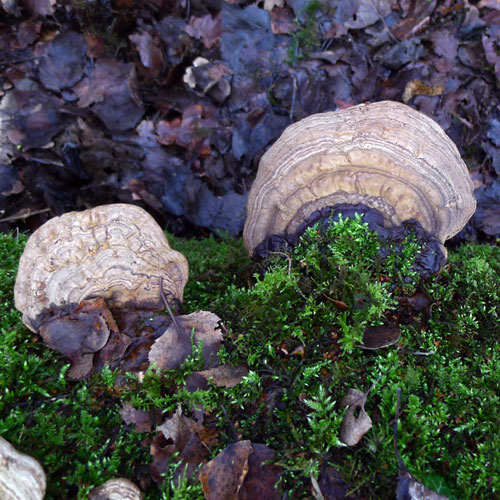 |
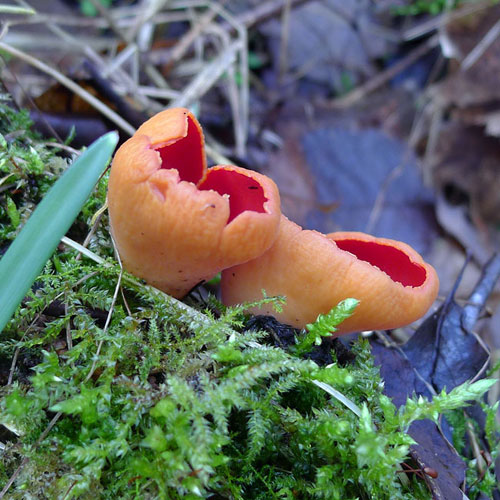 |
| Snowdrops |
Herring Gull |
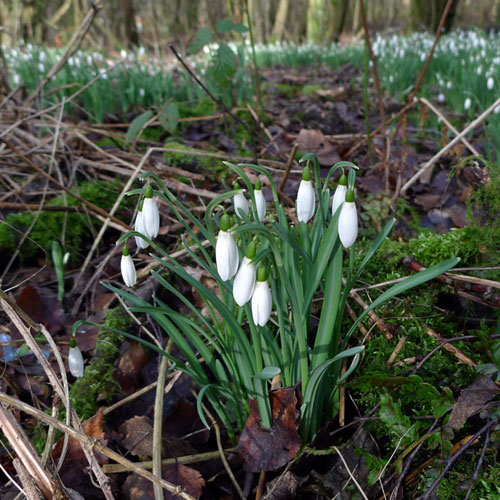 |
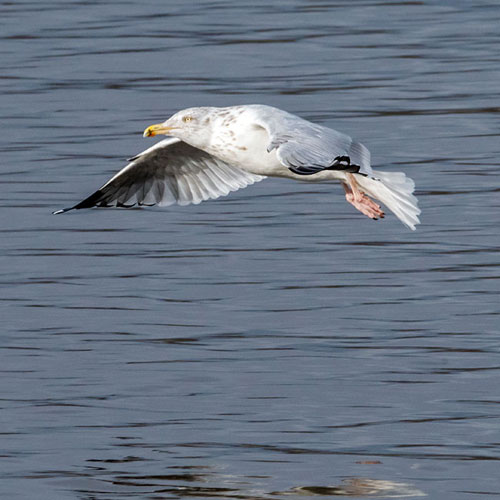 |
| Coot |
Grey Heron |
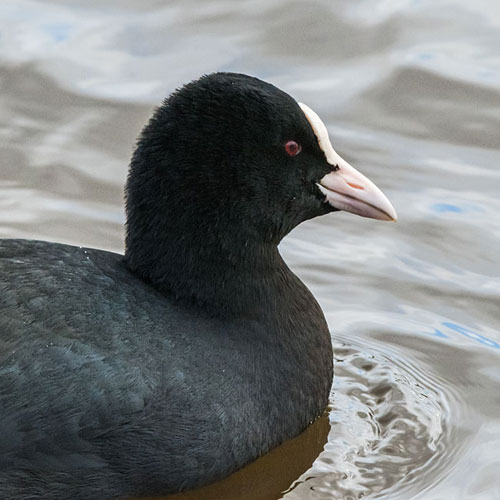 |
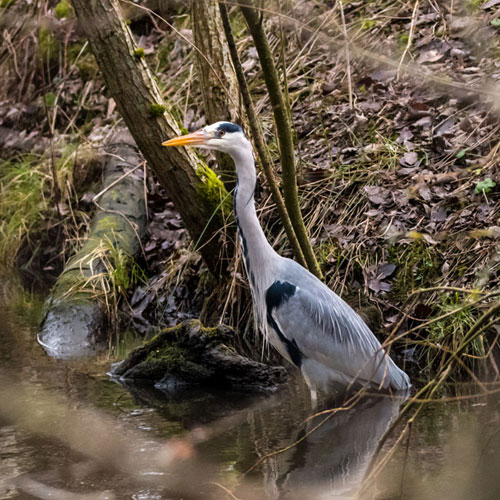 |
I crossed the park road to search the fields. Straight away I heard a Goldfinch
twittering
atop a young tree. There was a small flock of Fieldfares foraging in
the equestrian field. I also
managed a pleasing shot of a low passing Carrion Crow. In the wood
behind the field I spotted a
wee Coal
Tit foraging on a high branch of a large Oak tree.
| Goldfinch |
Fieldfare |
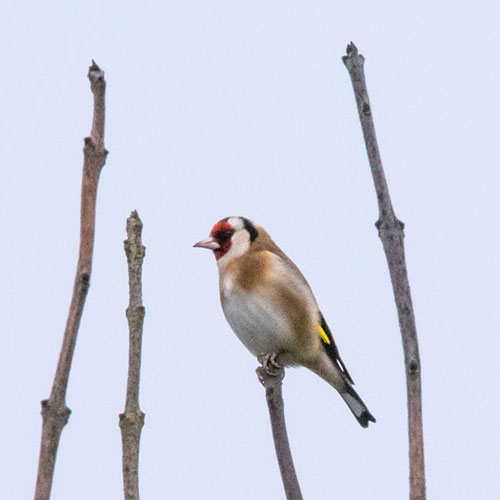 |
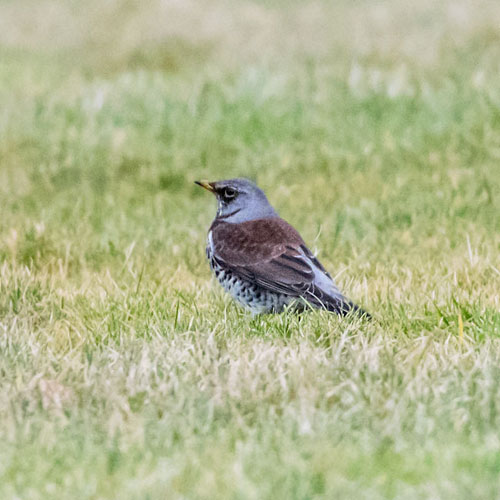 |
| Carrion Crow |
Coal Tit |
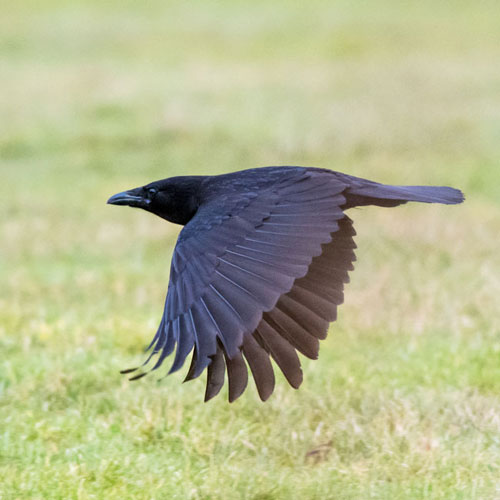 |
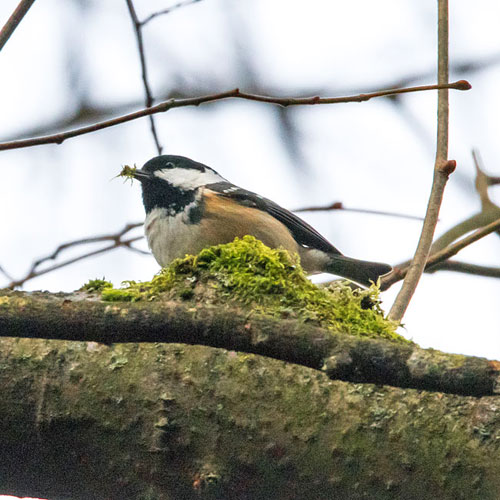 |
On my way back to the car I got a lovely shot of a singing Robin that
was belting out its warbling
tones as it sat on a branch of the hedge lining M&D’s
car park. Next I drove round to car park 4 for
a quick look at what I could find at the south end of the Loch. I was
drawn to a handsome Lesser
Black-backed Gull circling the car park. There was a pair of Campbell
Ducks patrolling the
lochside in the hope of “free” food. There were
also quite a few Greylags.
| Robin |
Lesser
Black-backed Gull |
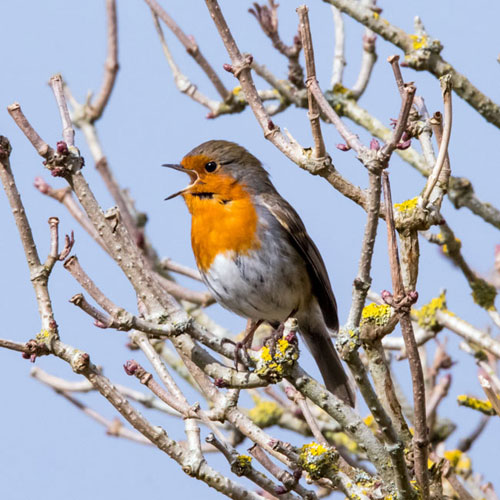 |
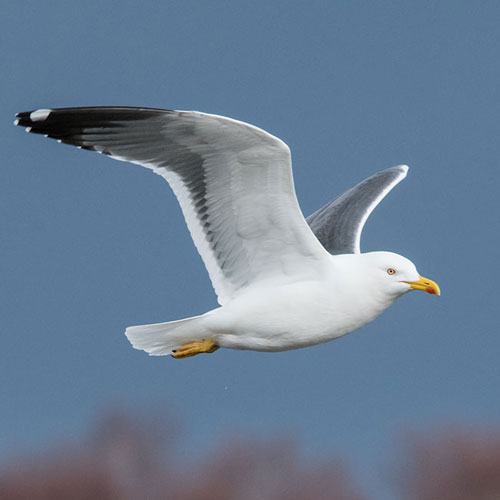 |
| Campbell Duck |
Greylag Goose |
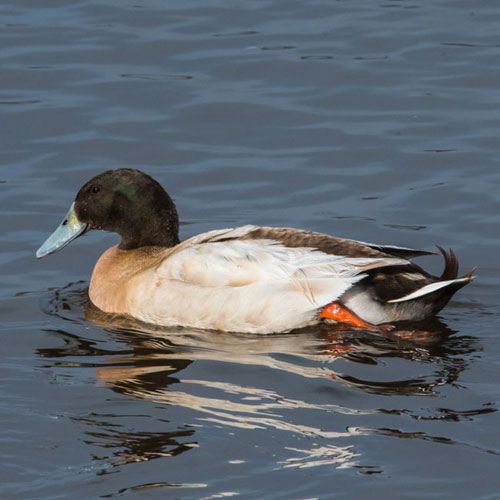 |
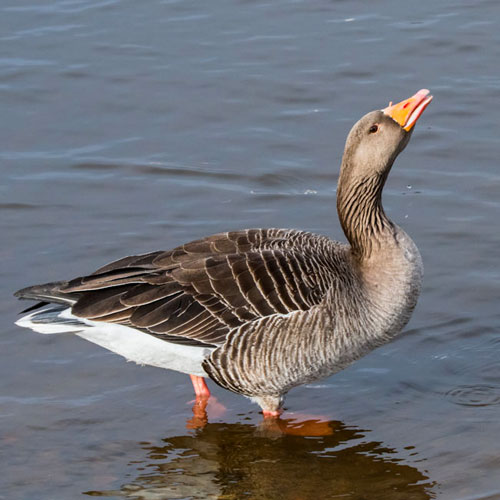 |
There was a mad rush of birds each time some kind person threw slices
of bread into the water.
Maddest of all were the Goosanders, who paddled furiously in the melee.
No such rush for the big Canada Geese whose tactic seemed to be to wait
on the shore with the
Swans, to crowd the feeders and gobble up the bread at source. There
were a few Pied Wagtails
searching the grassy areas for invertebrates, well away from the
madness going on in the water.
The Jackdaws too had a definite strategy. They stayed on the periphery
and moved in once things
had calmed down a bit, then they would swoop in to search for scraps.
| Canada Goose |
Pied Wagtail |
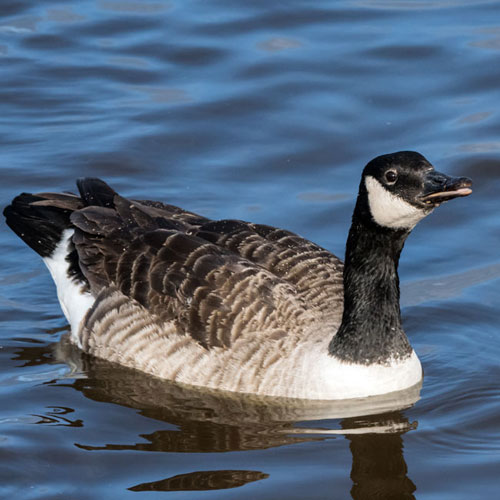 |
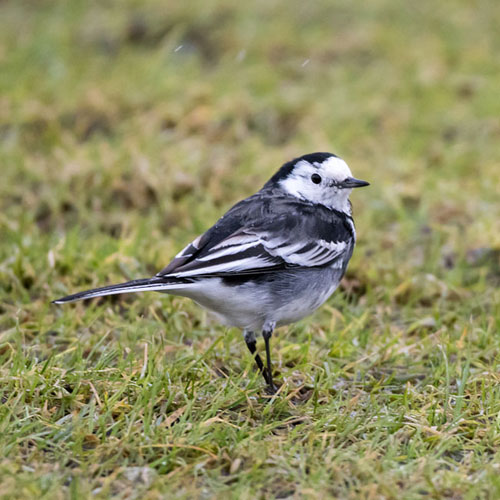 |
I’ve noticed that, following the big freeze, some of the
Tufted Ducks seem not to have returned to
their favoured area of the Loch, i.e. near the mouth of the South
Calder. They don’t prefer bread
so maybe they just like the company. I came across an odd couple at the
Watersports Centre. A
big Muscovy-Mallard hybrid stood on the jetty with another, smaller,
hybrid duck (unidentified).
| Drake Tufted Duck |
Female Tufted Duck |
My final visit of the week was on Sunday when I walked along a quiet
route, an old (now unused)
road that leads from the Caravan site access road through the woods to
just south of the
Bothwellhaugh Cemetery. I got some nice views of a pair of Magpies that
were feeding at the
edge of a huge field north of the road. As I passed along the old
decaying road I came across a
pleasing number of passerines, including a Chaffinch, Blackbird Great
Tit and Blue Tit.
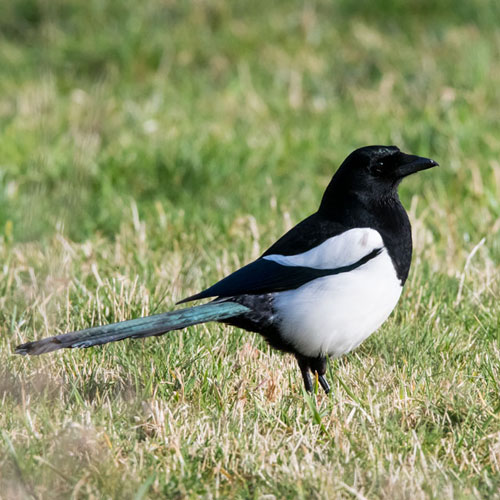 |
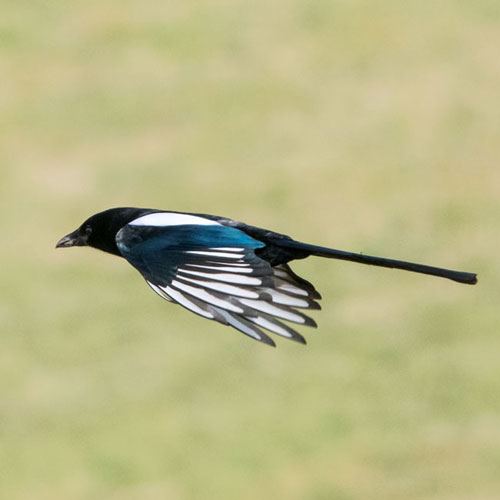 |
| Chaffinch |
Blackbird |
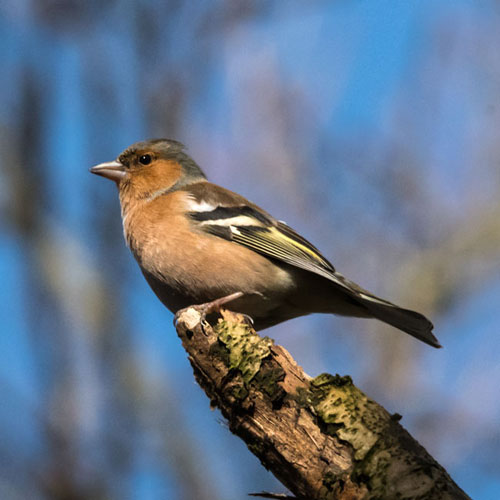 |
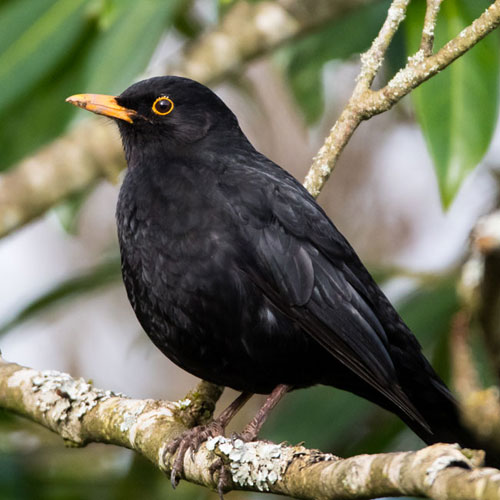 |
| Great Tit |
Blue Tit |
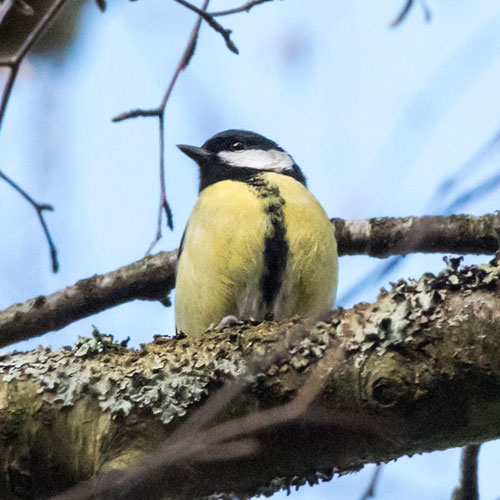 |
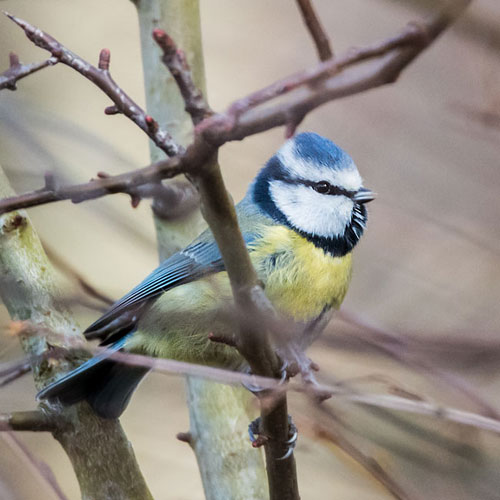 |
I returned via the back road to M&D’s car park. A
solitary Song Thrush was searching a field,
looking up every so often to check that it was safe to carry on.
Perhaps it was watching for
raptors such as the Buzzard I noticed in the sky above. My final
observations of the week were of
a pair of early flowers, Snowdrops and Crocus, brightening up the
verges of the road near the
entrance to the Caravan Park.
| Song Thrush |
Buzzard |
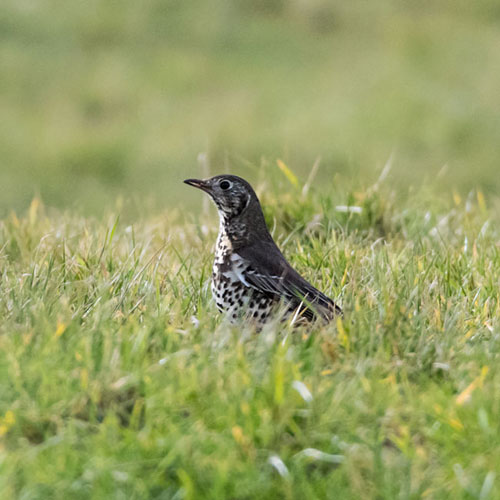 |
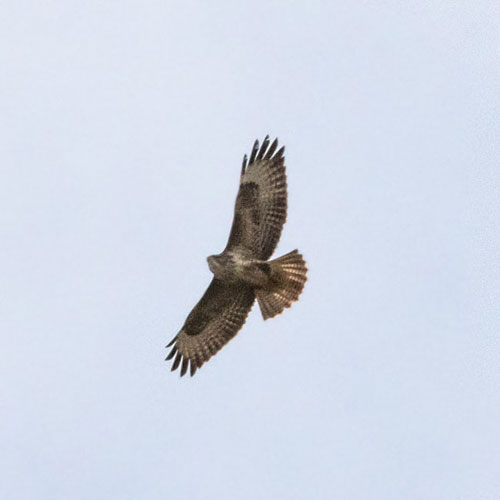 |
| Snowdrop |
Crocus |
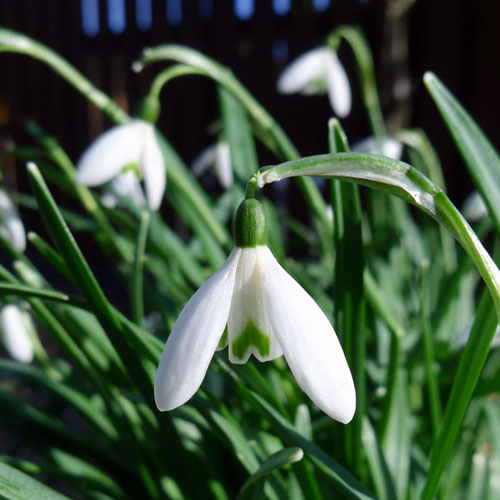 |
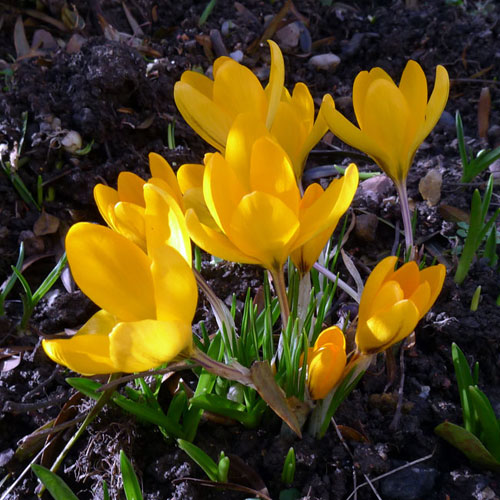 |
Week ending: 14th February 2021. Baron's Haugh,
Dalzell
Estate
This week I visited RSPB Barons Haugh on three sightings-rich
occasions. I think the icy
conditions actually helped viewing as lots of birds were forced out
their usual haunts to search for
food. My first visit was on Monday and my first capture was of a Nuthatch
on a high tree
branch, taken as I passed through Dalzell Estate and down into Barons
Haugh. I next caught sight
of a Blue Tit working on the branches of a large tree adjacent to the
stables. I bypassed Chestnut
Way (to avoid other walkers) by descending Easter Braes. There were
about a half dozen Goldeneye
on the Clyde, including one juvenile drake.
| Nuthatch |
Blue Tit |
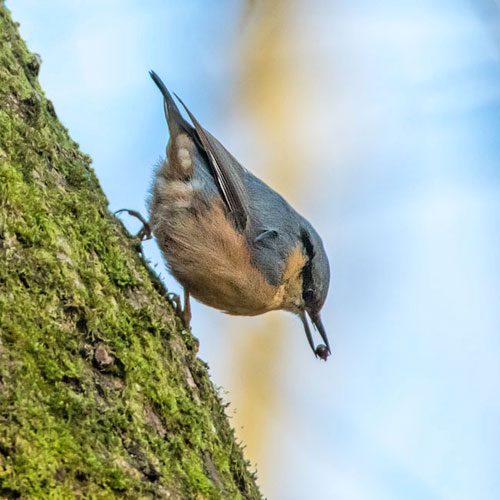 |
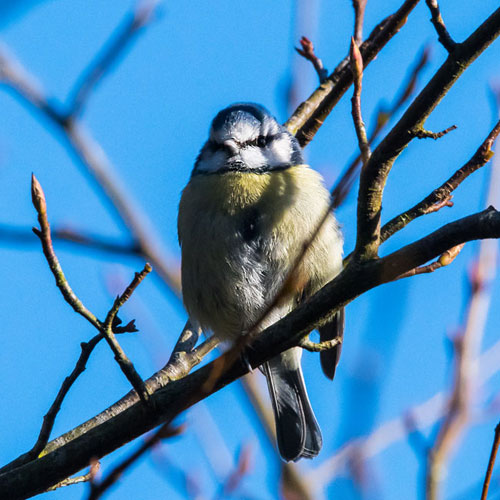 |
| Goldeneye |
Juvenile Male
Goldeneye |
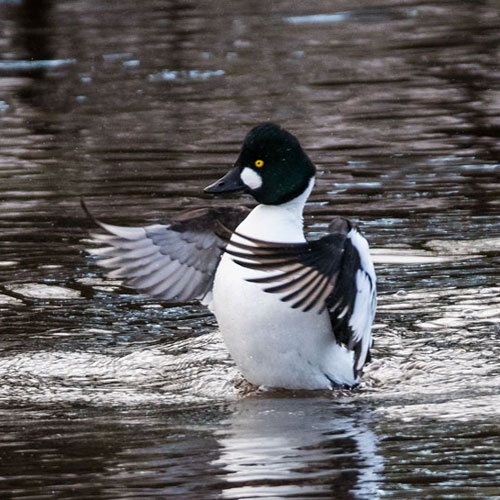 |
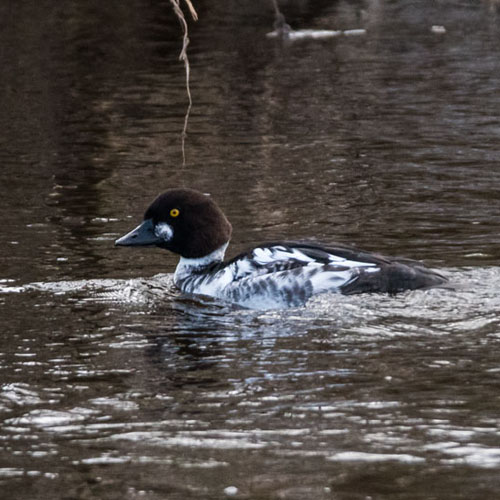 |
Further along the river I could see a hovering Kestrel
silhouetted against the sky. On the far
bank a Cormorant
was standing drying its feathers, while a pair of Mute Swans were
swimming along the near bank. I also saw a female Goosander diving
midstream alongside a
drake Goldeneye.
| Kestrel |
Cormorant |
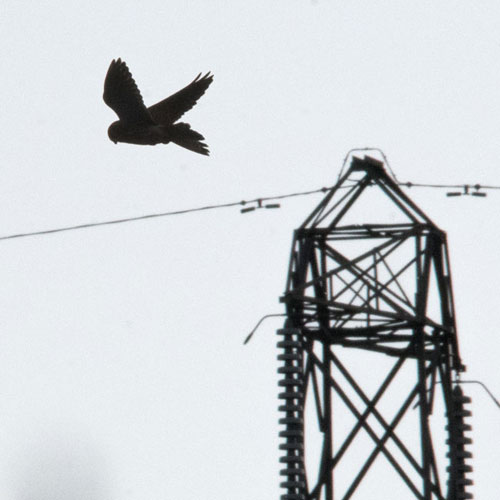 |
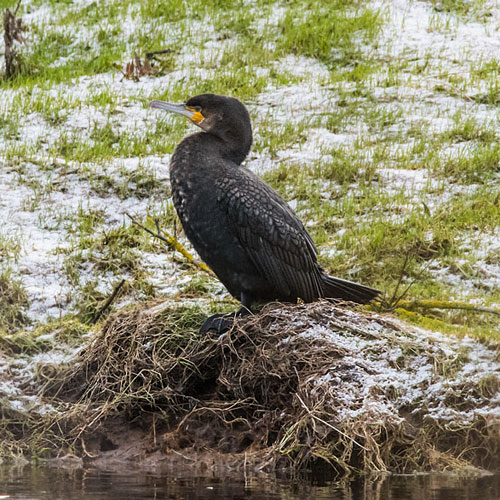 |
| Mute Swan |
Female Goosander |
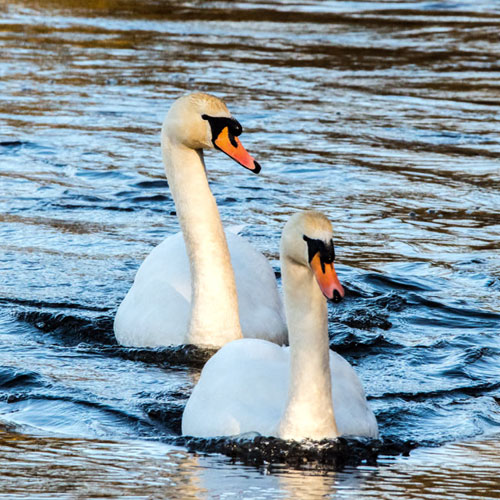 |
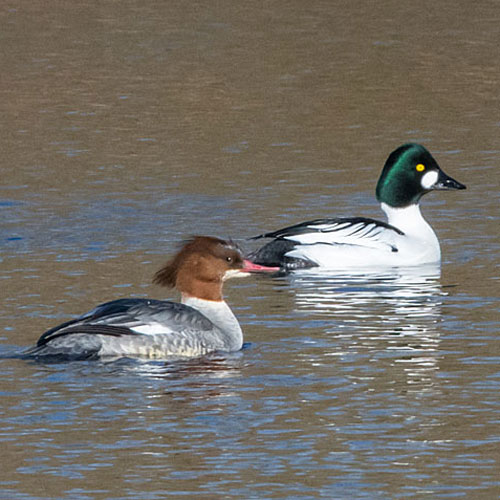 |
From the Phoenix Hide I could see a Mallard flock standing preening on
the still vast sheet of ice
that covered the Haugh.
I spotted a single foraging Mistle
Thrush in the field just before the Marsh Hide.
From the
Hide I was pleased to see a drake Shoveler
with Teal and Wigeon (before I could
photograph the Wigeon, they were spooked on the appearance of a
brightly-clad lady by the
hide ). There was also a pair of Goldfinches feeding on Teasel seed
heads that are just in front of
the Hide.
| Mistle Thrush |
Shoveler |
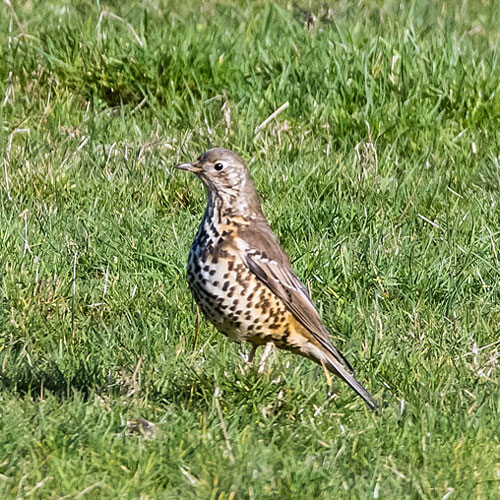 |
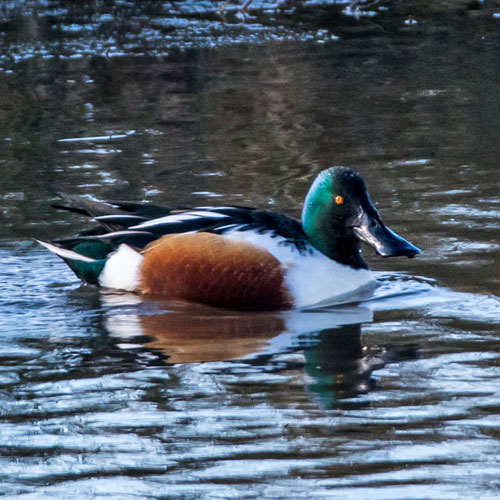 |
| Goldfinch |
Teal |
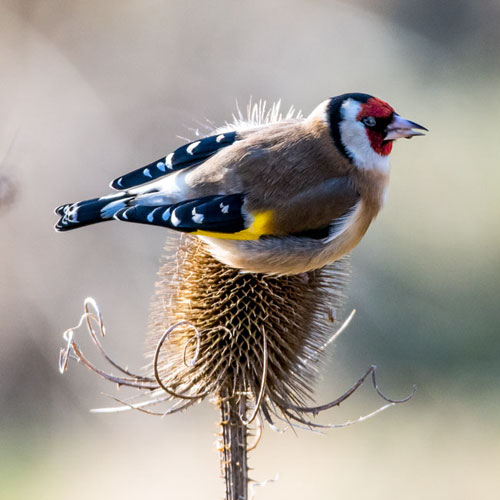 |
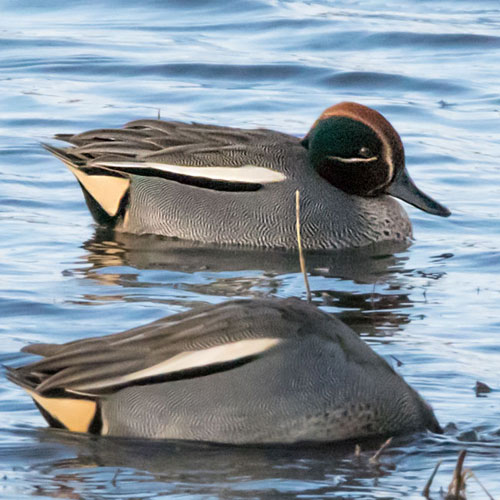 |
I made my next visit on Thursday, a much brighter, but much colder day.
I retraced Monday’s
route, again making my way first through Dalzell Estate. I started my
haul of shots on Easter Brae
with some pictures of a flock of noisy Jackdaws that were flying high
above my head. Just before
the metal gate, a wee Blue Tit that was resting on a sapling allowed me
to snap it as I passed.
Near the mouth of the Dalzell Burn I noticed the familiar bright blue
and orange plumage of a Kingfisher .
It was sitting on a small branch overhanging the burn. Further along
the
footpath I got a nice shot of a singing Wren that was perched on
Hawthorns.
| Jackdaw |
Blue Tit |
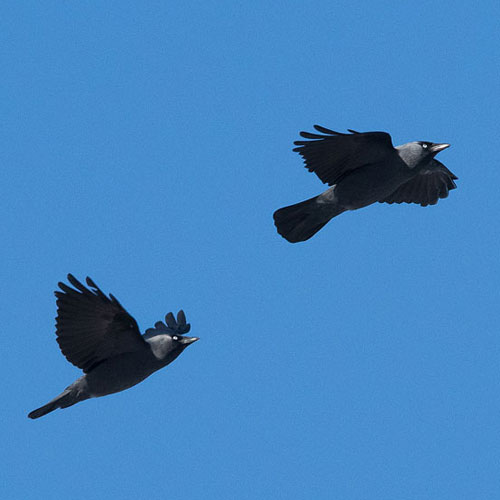 |
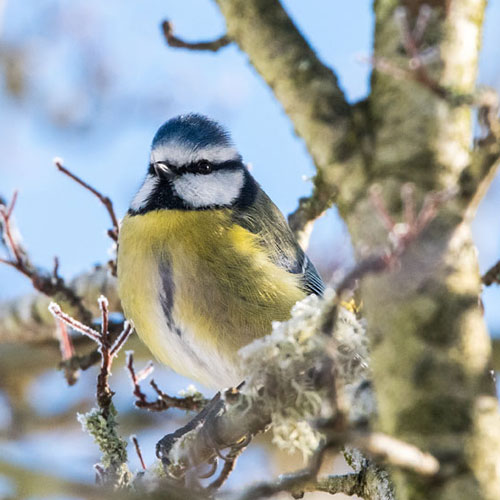 |
| Kingfisher |
Wren |
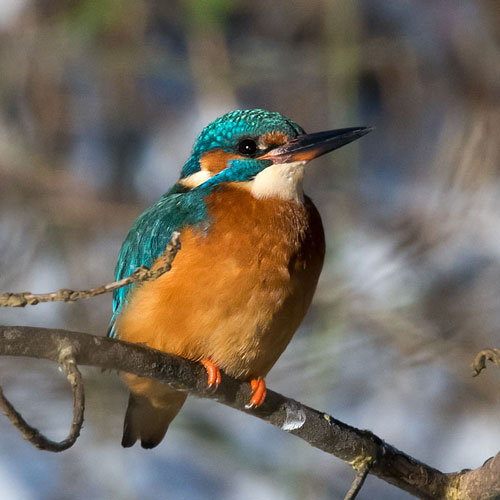 |
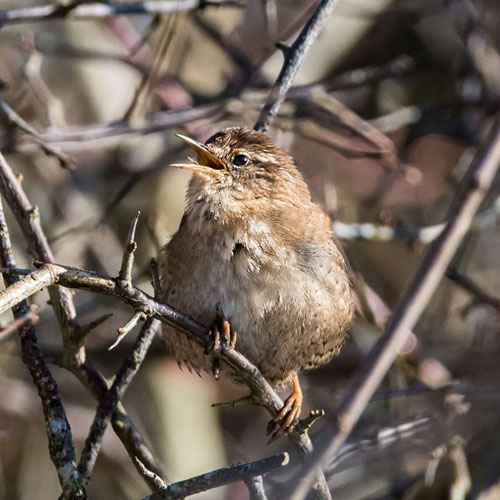 |
I was drawn towards the river by the sound of swans’ wings.
Sure enough four Whooper
Swans flew majestically past heading south along
the river.
As I picked my way back to the path I partially disturbed some
Bullfinches I hadn’t noticed
feeding in the bushes. I was able to photograph the male before he
retreated to the other side of
the bush. My next sighting was of a Treecreeper slowly working its way
up a Hawthorn trunk. This
lead me to one of my favourite birds, a Goldcrest .
It was moving along the sunlit bank of
Hawthorns, flitting between the base of each bush. My wee session with
the Goldcrest was
interrupted by a flypast of three low-flying Canada Geese. They joined
a flock a flock of geese that
were already on Low Merryton fields on the other side of the Clyde.
| Goldfinch |
Treecreeper |
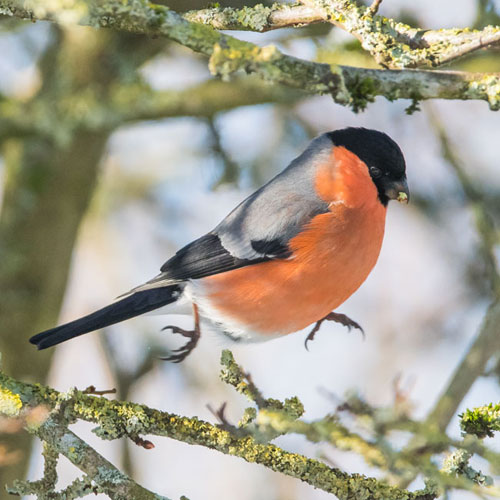 |
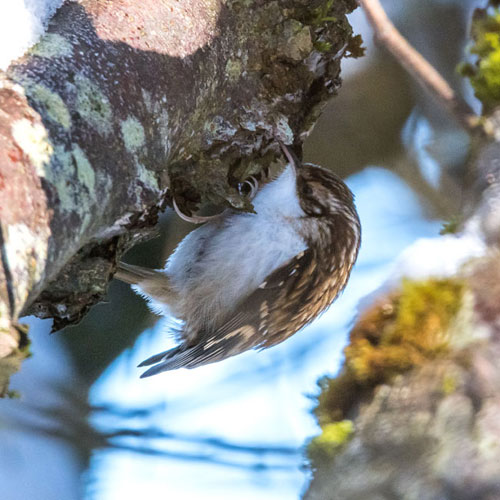 |
| Goldcrest |
Canada Goose |
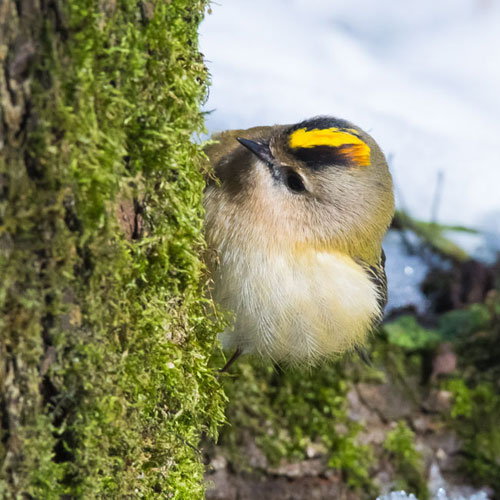 |
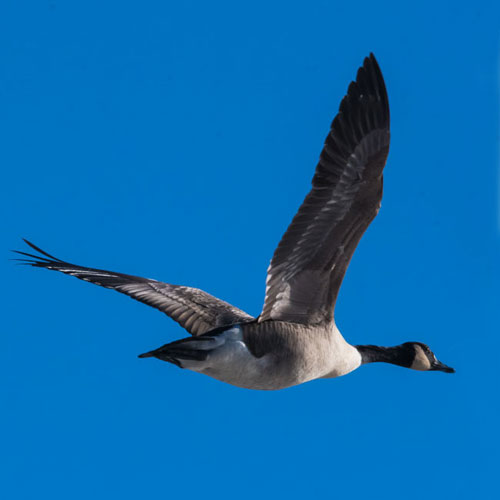 |
Further sightings along that stretch included Great Tit, another Wren
and a Long-tailed Tit. And
from the Centenary Hide I saw a flock of Lapwings moving indecisively
between the hides taking
an age to land. Later, as I neared the river bend, unusually, I came
upon a Grey Squirrel nibbling
something in the thorns. Also, across the river from the Phoenix Hide,
four Buzzards were
interacting, albeit some 200m away, although one bird circled a bit
nearer.
| Great Tit |
Wren |
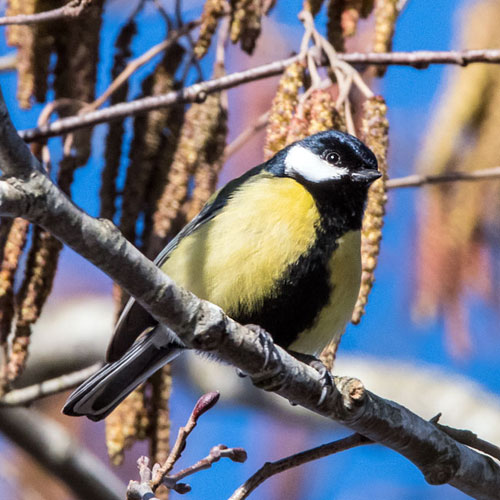 |
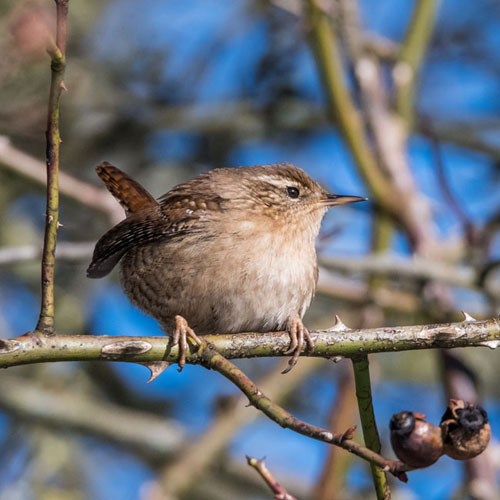 |
| Long-tailed Tit |
Lapwing |
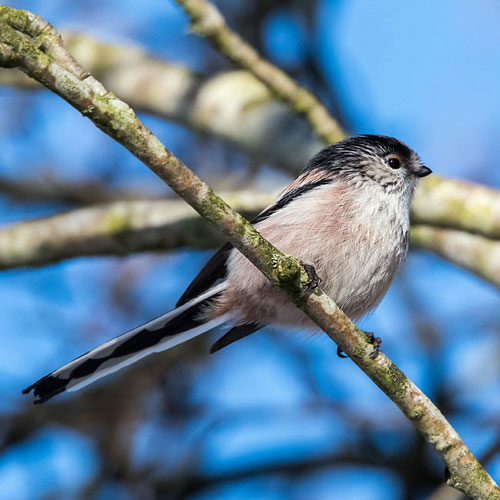 |
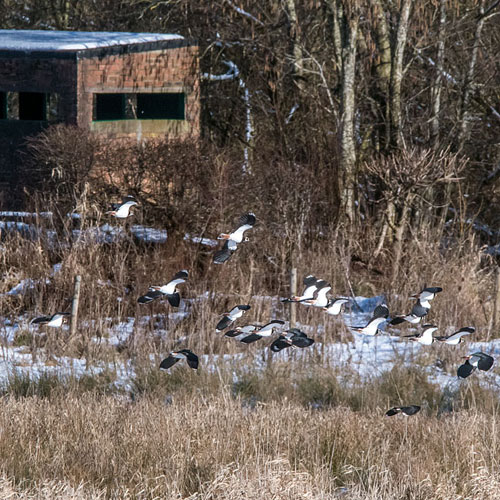 |
| Squirrel |
Buzzard |
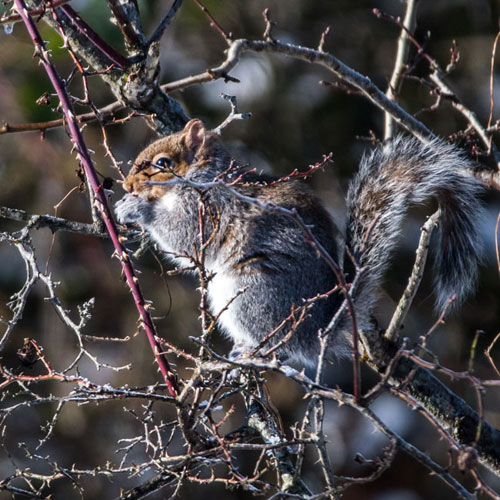 |
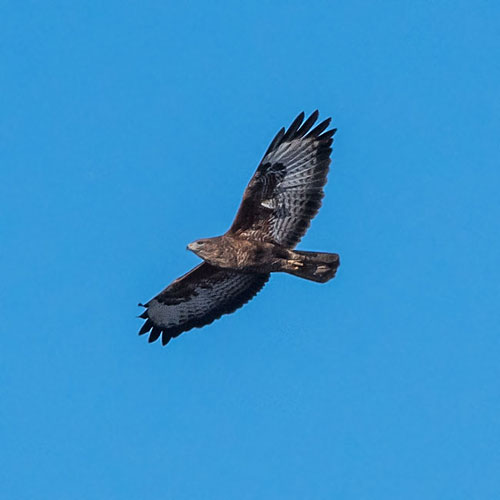 |
The view from the Phoenix Hide shows a large Canada Goose flock on the
receding ice sheet.
These seem to commute between the Haugh and Low Merryton Fields.
Just before I turned off the Clyde Walkway path as I headed for the
Marsh Hide, I watched a welllit Little Grebe diving in the Clyde. Near
it was a lovely Mallard. I progressed towards the Marsh
Hide and caught the attention of a pair of Blackbirds that were
foraging in the leaf litter near its
entrance.
| Little Grebe |
Mallard |
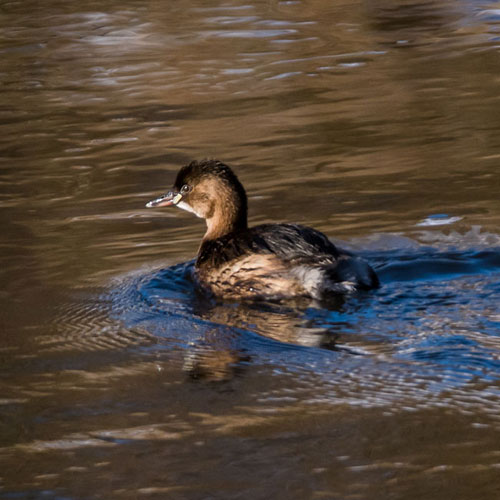 |
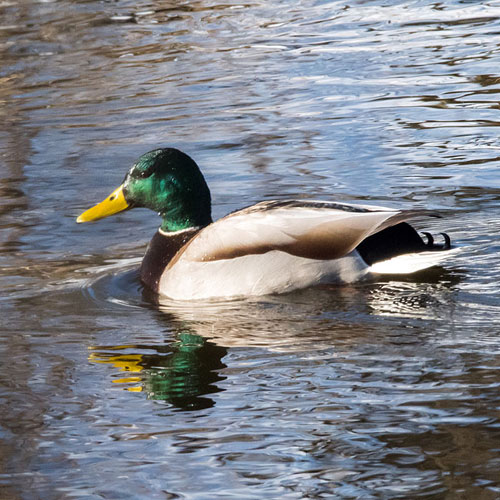 |
| Female Blackbird |
Male Blackbird |
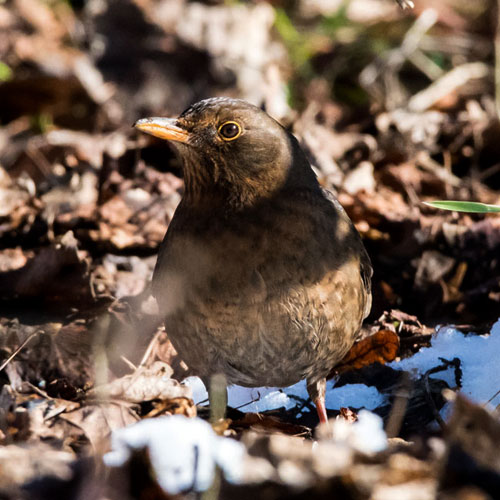 |
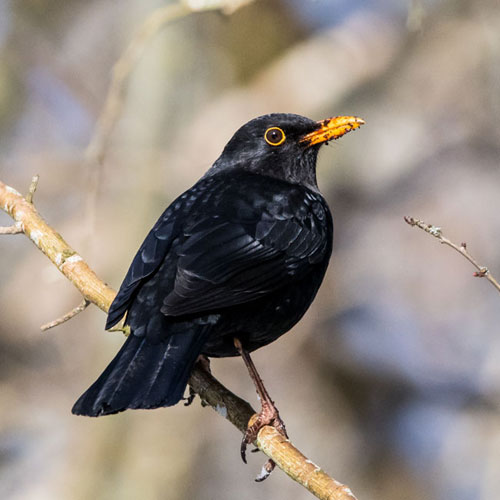 |
During my brief visit to the Marsh Hide I finally got a picture of the
drake Wigeon I missed on
Monday. There were also birds on some newly-appeared feeders - Great
Tit and a Blue Tit. On my way back to the car park I was glad to see a
pair of Fieldfares eating the last berries off the
Hawthorns in the middle of the coo’s field.
| Wigeon |
Blue Tit |
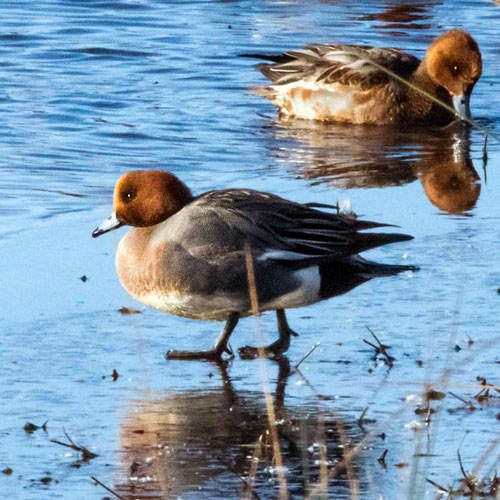 |
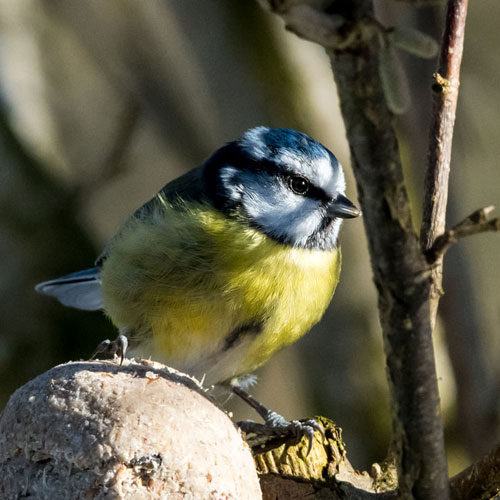 |
| Great Tit |
Fieldfare |
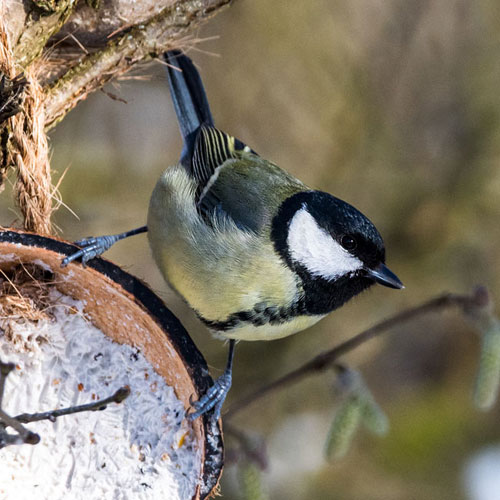 |
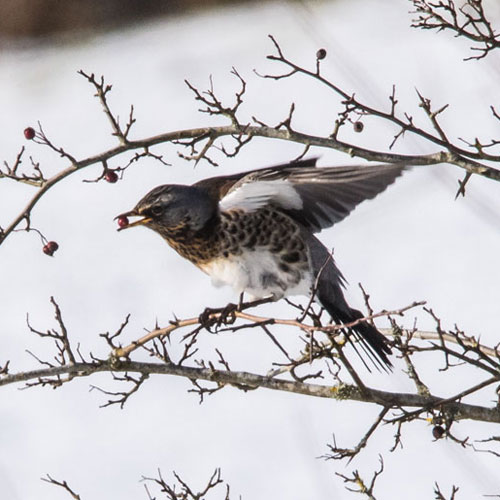 |
Friday was my last visit of the week to the Haugh. The highlight was a
fine view of a Redwing that
was rummaging in the leaves below trees just off the Clyde Walkway
path. I also liked the shot of
a drake Mallard that was swimming in the Clyde near the Phoenix Hide.
| Redwing |
Mallard |
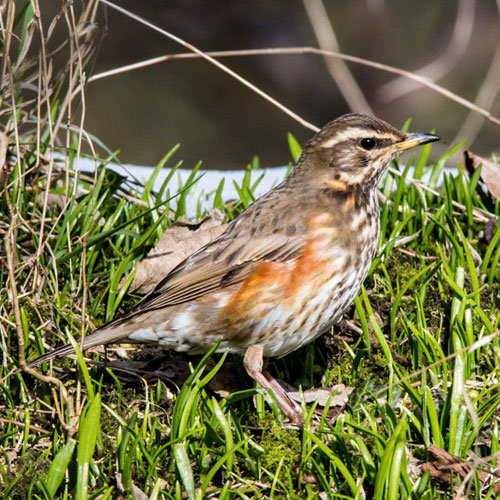 |
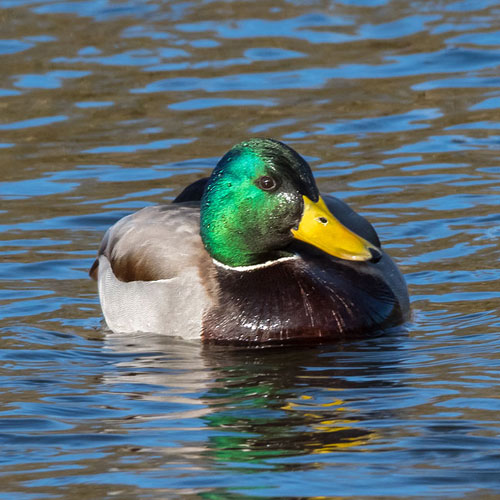 |
Below is a wide view of the Haugh that shows the Marsh Hide. From the
picture you can see that
most of the Haugh was still covered in ice.
I also spotted a Teal and Goldeneye on the Clyde, close and well-lit -
just as I like them. I passed
a female Kestrel that was perched on a tree close to the river, and
soon afterwards, a skein of
Pink-footed Geese passing low overhead. They were on-course for the Low
Merryton fields
favoured by the Canada Geese I’d see earlier in the week.
| Teal |
Goldeneye |
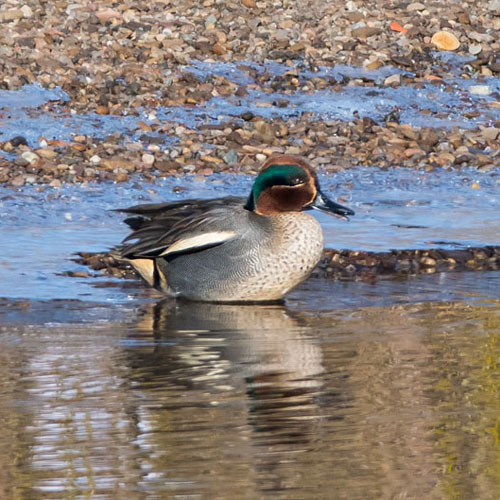 |
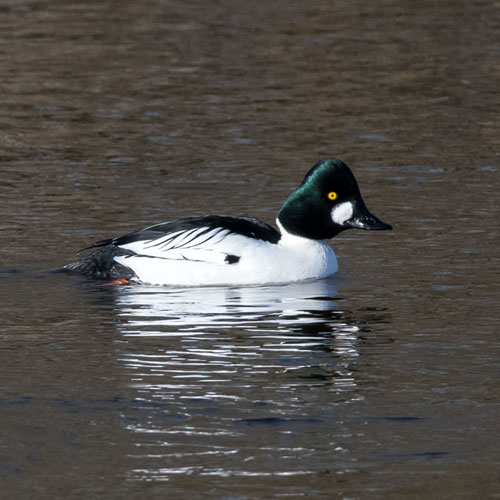 |
| Female Kestrel |
Pink-footed Goose |
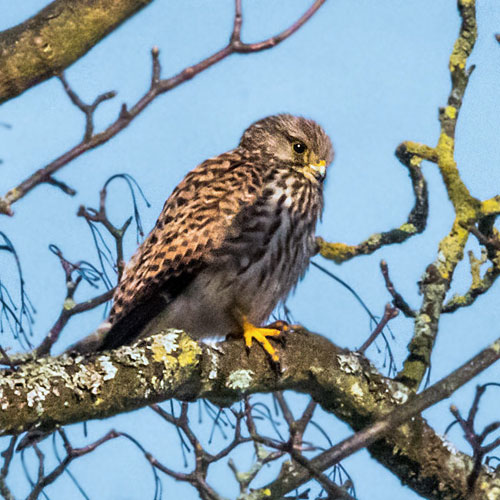 |
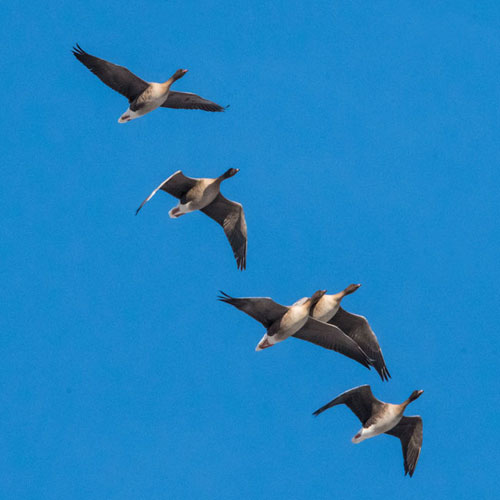 |
I had a thrilling week at Barons Haugh and I saw many beautiful birds,
but throughout the visits
my joy was tempered by my appreciation of the desperate struggles that
they were experiencing
as they strived for food and warmth. But I suppose that is life
Week ending: 7th February 2021: Baron's
Haugh, Strathclyde Country
Park,
Jim's Garden
Tuesday am: RSPB
Baron’s Haugh, Motherwell
The skies were grey, the breeze was icy but, unlike the preceding days,
it was dry. I spotted some Goldeneye
in the River Clyde as I moved off the Chestnut walk onto the Clyde
Walkway.
They would usually be on the Haugh but the ice there has probably
caused them to opt for the
deeper but ice-free river. I also found a pretty cluster of Velvet
Shank fungi on a tree
overlooking the river.
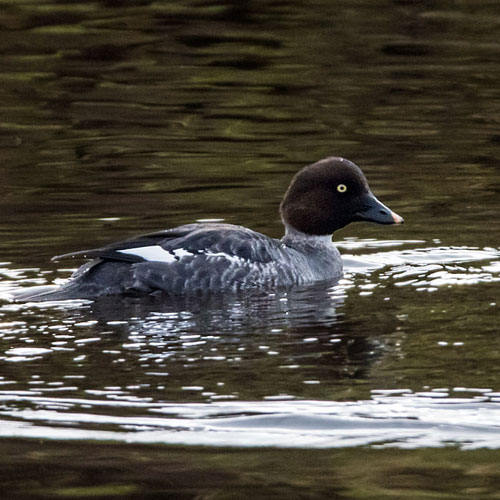 |
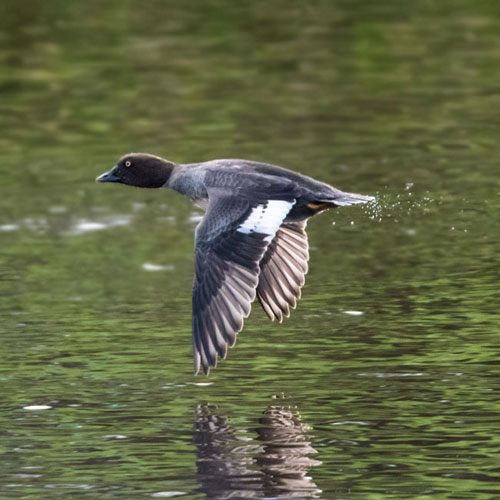 |
| Goldeneye Drake |
Velvet Shank |
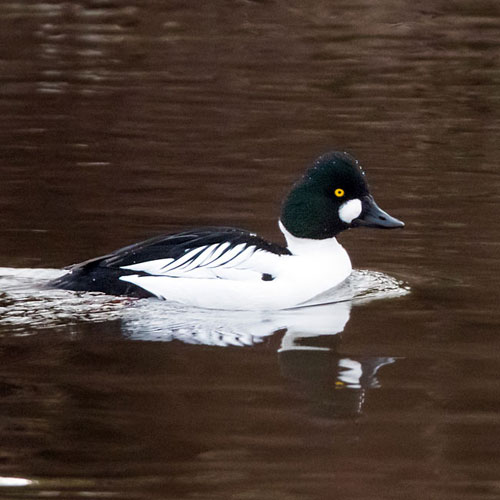 |
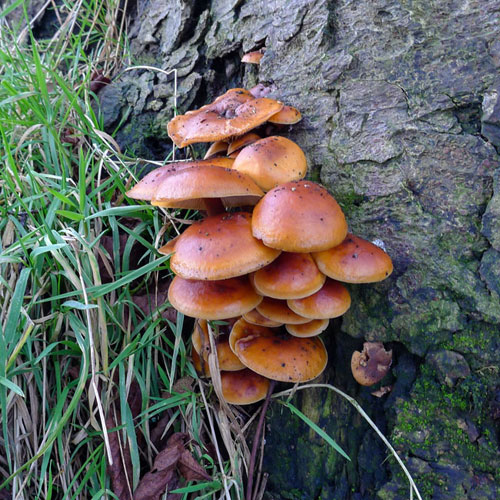 |
There were Long-tailed
Tits in the path-side hedgerows. These acrobatic
little fliers flit
unpredictably between the branches and twigs and present a stiff test
for any photographer. I
managed a distant shot of a Little
Egret that was flying over the river towards the Haugh,
and during that shot, a Song Thrush swooped into the undergrowth. I did
though manage a
sneaky picture as it hid there.
At the Centenary Hide I watched a large flock of Wigeon
circle the Haugh, no doubt
searching for an appropriate landing area of water within the expanses
of ice. It couldn’t have
been a simple choice as they took an age to settle.
One particular fly-past was close enough to get a fairly detailed photo
of the leading birds. Just
after the Wigeon had settled on the far side of the Haugh, a Sparrowhawk
flew up from
between the reeds. It could have been disposing of a kill. Away from
the hide, on the Clyde, a pair
of Goosanders were diving in the river that was swelled by a week of
rain.
| Wigeon |
Sparrowhawk |
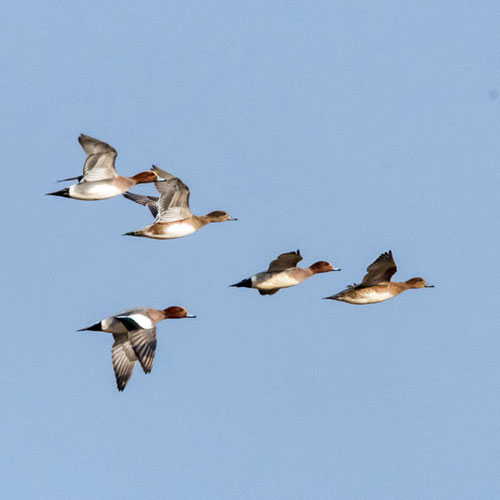 |
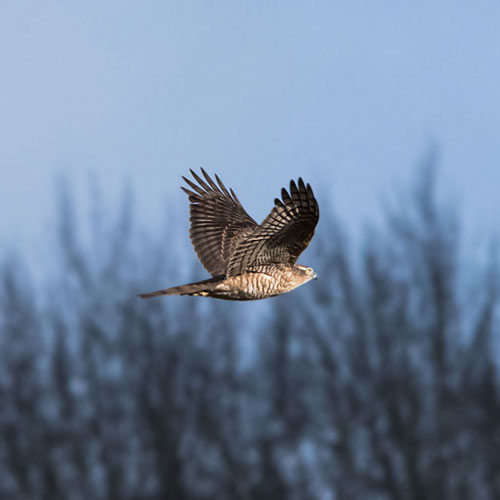 |
| Female Goosander |
Drake Goosander |
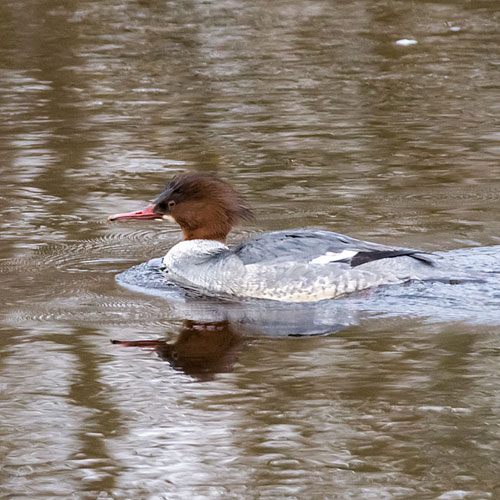 |
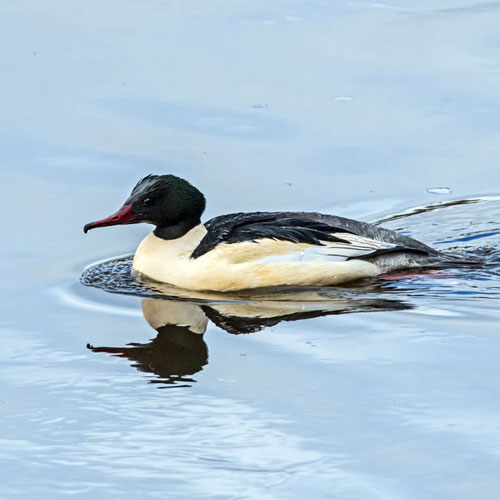 |
From
the Phoenix Hide I could see many of the Wigeon that had landed
earlier. Around them were
Mallards, a few Canada Geese and a couple of Mute Swans.
On the basis of what I saw, I decided that I’d give the
Causeway and Marsh Hides a miss. My final
view of the river as I made for the path toward the car park was
rewarded with a pair of Little Grebe and a close view of a drake
Goldeneye. On my ascent of the slope I discovered a Jay
feeding around a mid-field Hawthorn bush. Nearer the car park I had my
weekly meeting
with the female Kestrel that seems to like perching on the path-side
trees.
| Little Grebe |
Goldeneye |
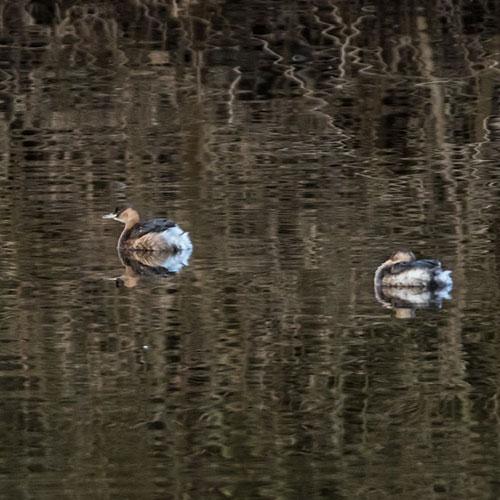 |
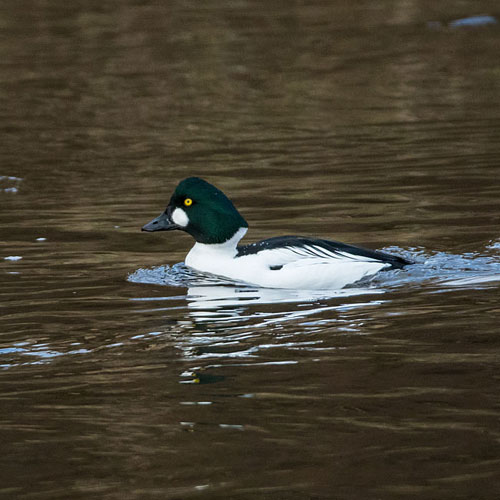 |
| Jay |
Kestrel |
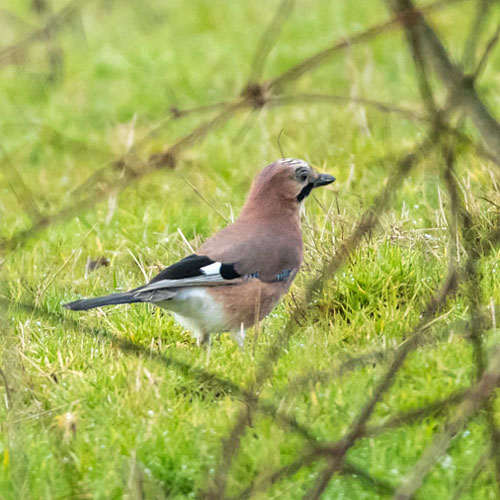 |
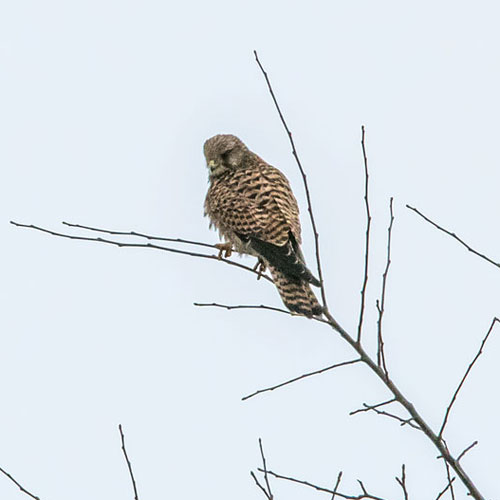 |
Wednesday: Strathclyde Country Park, Motherwell
The next day I popped into Strathclyde Park, car par 4, for a wee walk.
In the short time I was
there I snapped a view of Black-headed Gulls assembled on the
ice-covered Loch.
A Cormorant passed overhead and landed on the Loch. Alas it
didn’t catch a fish during the time I
viewed it. A Black-headed Gull that was standing on a boulder looked at
me no doubt longing for
me to throw it bread.
Jim’s Garden - progress report:
My quest to attract birds to my garden is showing early signs of
success. The Robin that I was
lucky to see just one a week, if that, now visits several times daily.
The shots below of the Robin
were taken as it stood at the other side of my patio door. The odd
Starling now visits, bullying the
resident House Sparrows away to allow it to gorge the fat-balls in
peace. There is a flock of Feral
Pigeons in the estate but recently I’ve seen only a few
individuals in my garden. This is probably
because I have a tray below the seed feeder to collect spillage. Still,
there are no Tits or Finches,
but I live in hope.
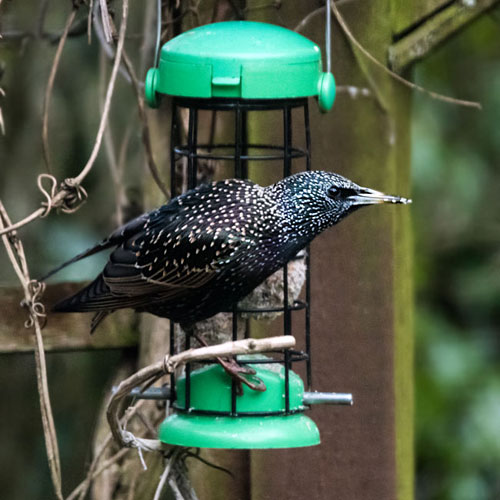 |
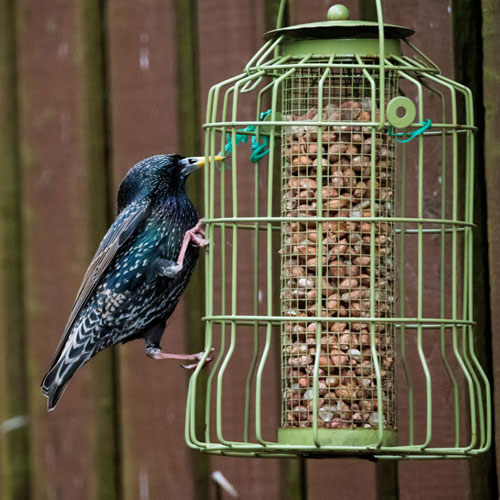 |
| House Sparrow |
Feral Pigeon |
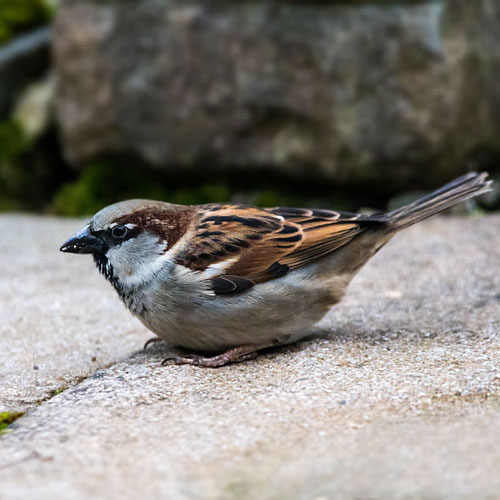 |
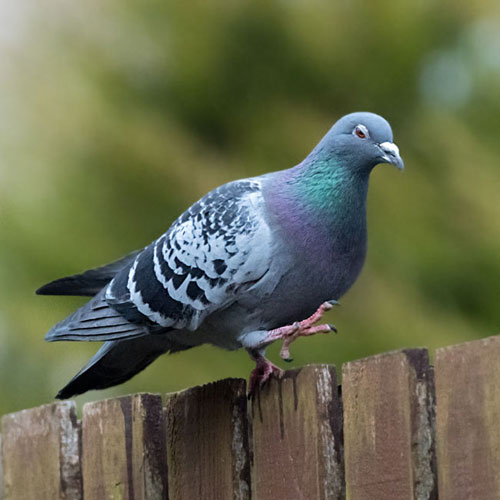 |
Highlights
- FEBRUARY 2021
We present last month’s gallery of my
favourite pictures I’ve taken during February 2021. They are
not listed in the order they have been taken, but according to a series
of themes. I’ve kept
commentary to a minimum, preferring to let each picture talk for itself.
ON THE WATER
| Black-headed
|
Gull |
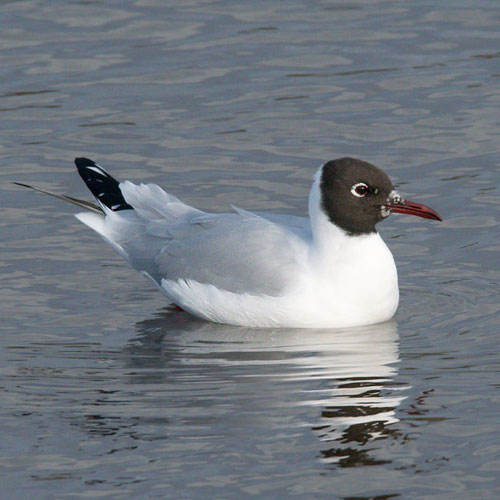 |
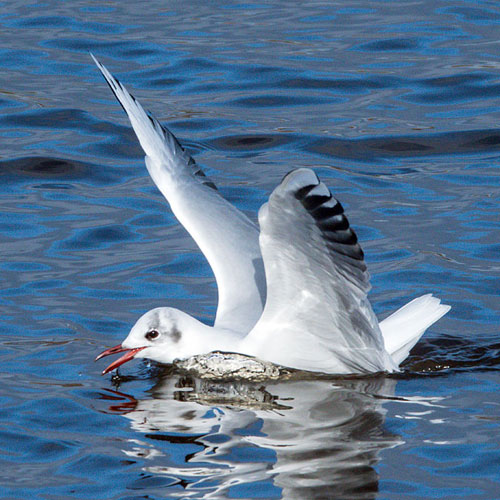 |
| Canada
Goose |
Common
Gull |
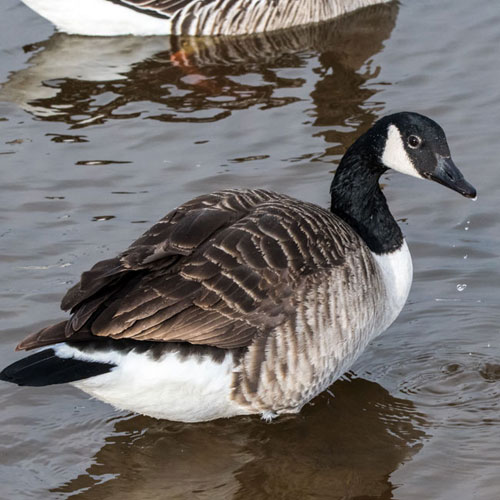 |
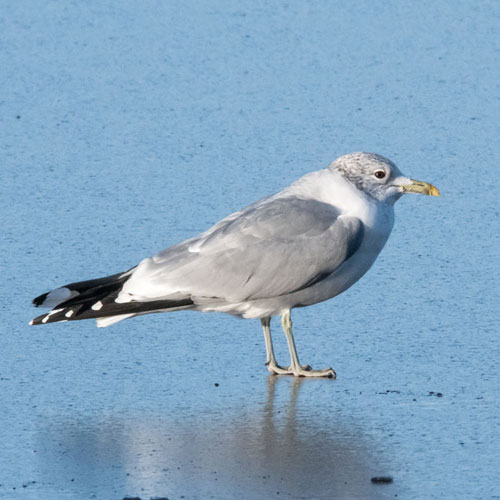 |
| Female
Goosander |
Grey
Wagtail |
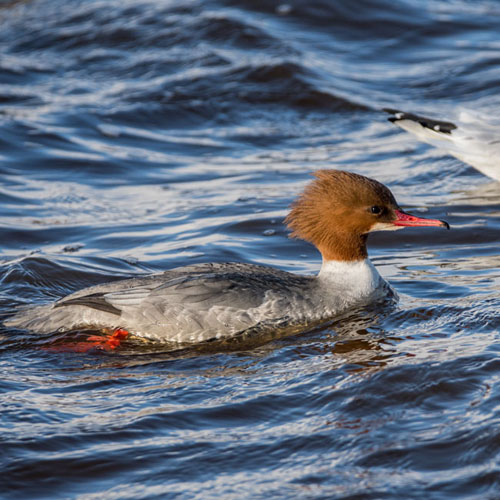 |
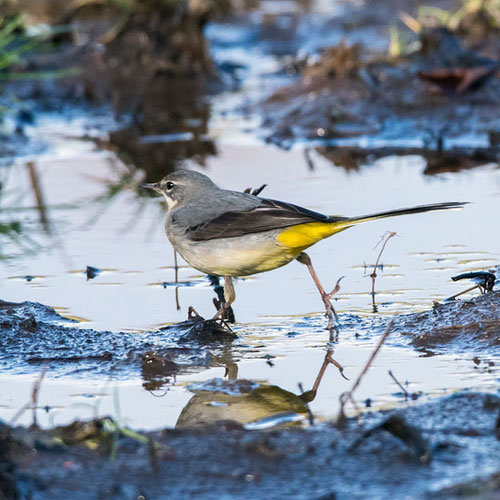 |
IN
THE AIR
| Black-headed
Gull |
Black-headed
Gull |
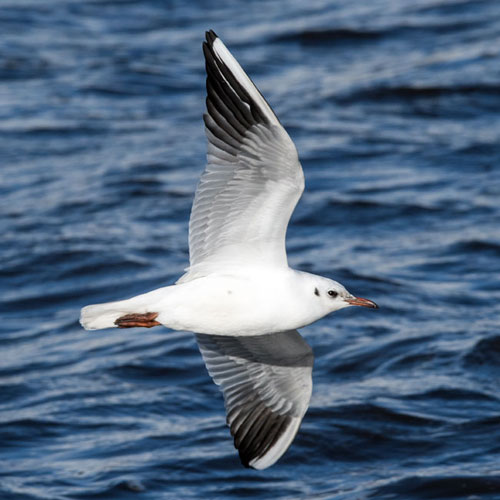 |
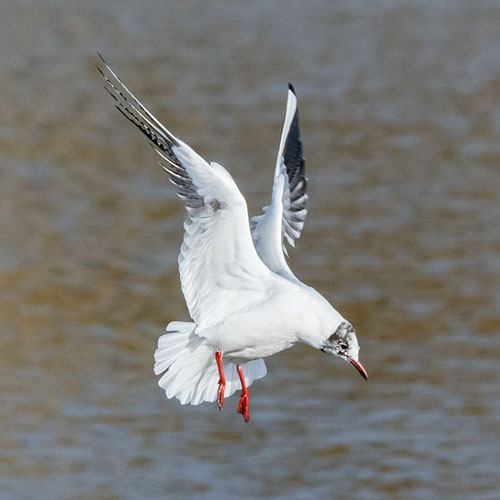 |
| Black-headed
Gull |
Buzzard |
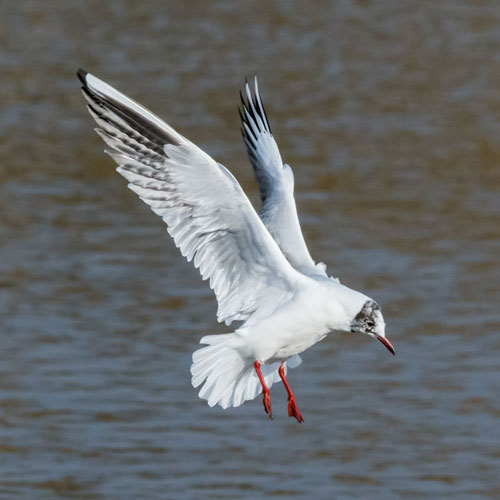 |
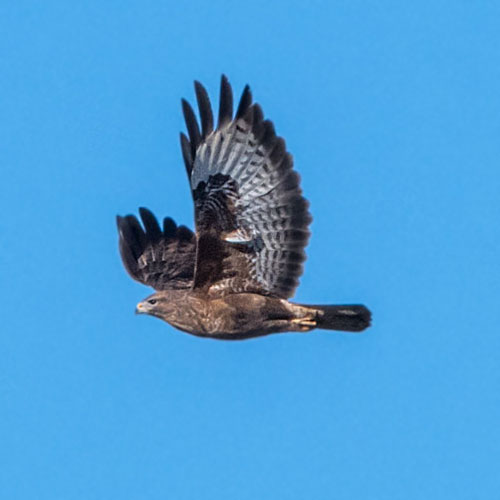 |
| Buzzard |
Buzzard |
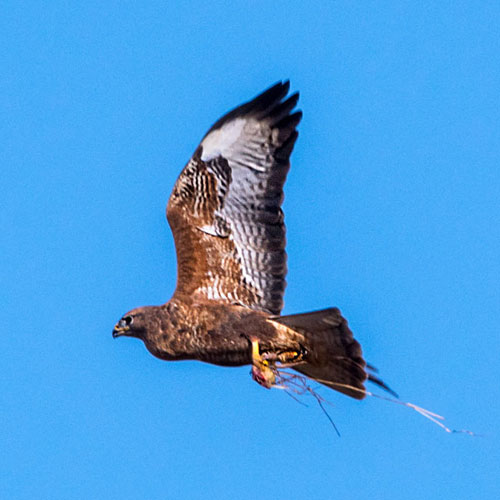 |
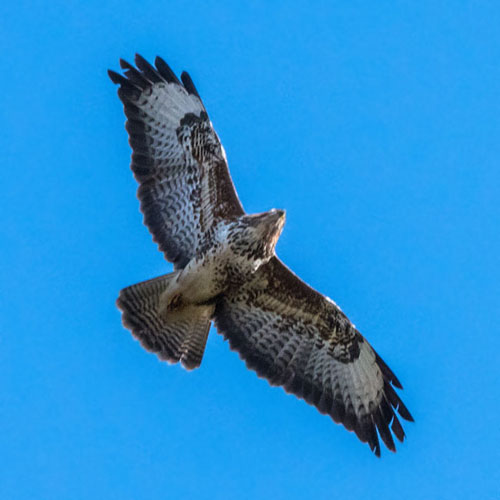 |
| Common
Gull |
Female
Goosander |
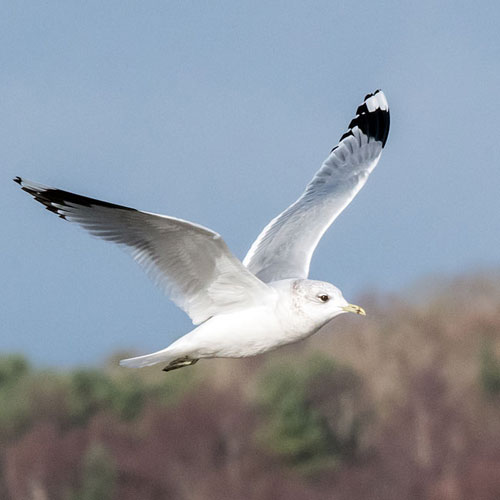 |
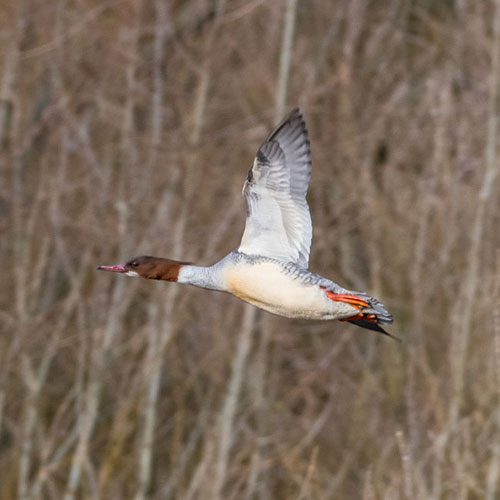 |
| Jackdaw |
Lesser
Black-backed Gull |
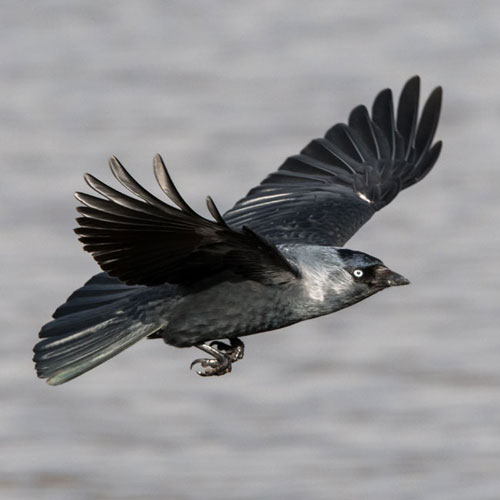 |
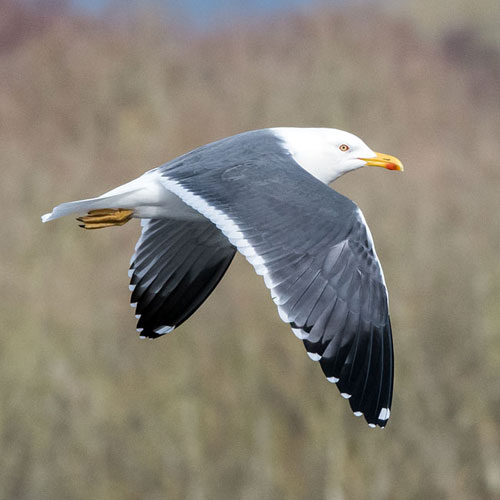 |
| Drake
Mallard |
Sparrowhawk |
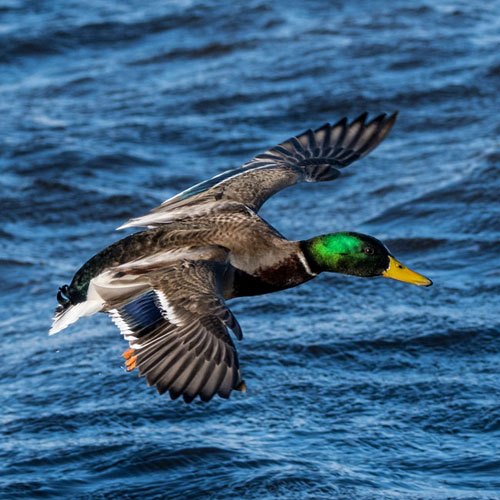 |
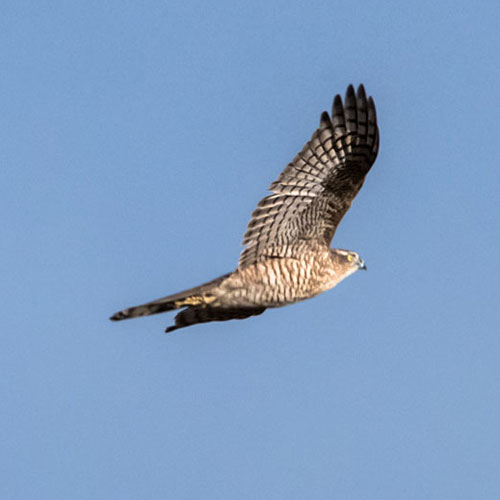 |
PORTRAIT
| Canada
Goose |
Drake
Goosander |
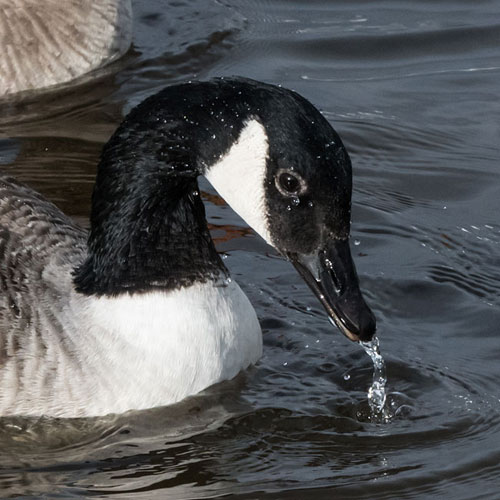 |
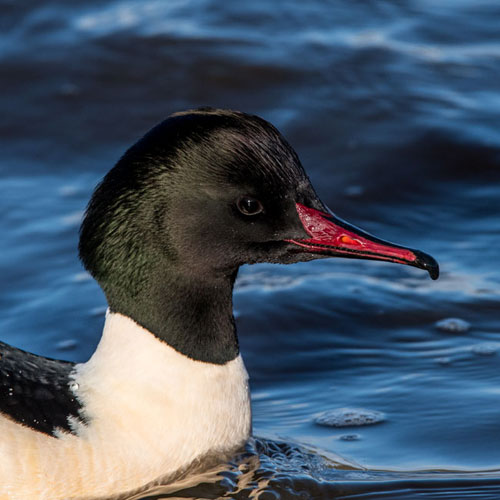 |
| Mute
Swan |
Tufted
Duck |
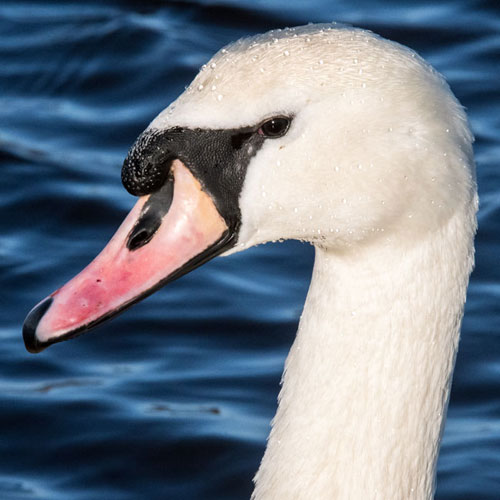 |
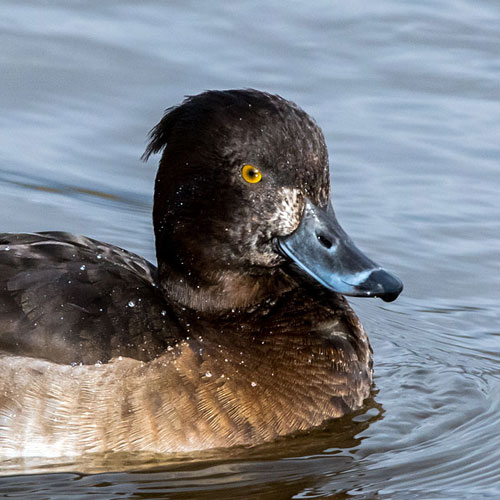 |
JIM'S
GARDEN BIRDS
| Male
Blackbird |
Dunnock |
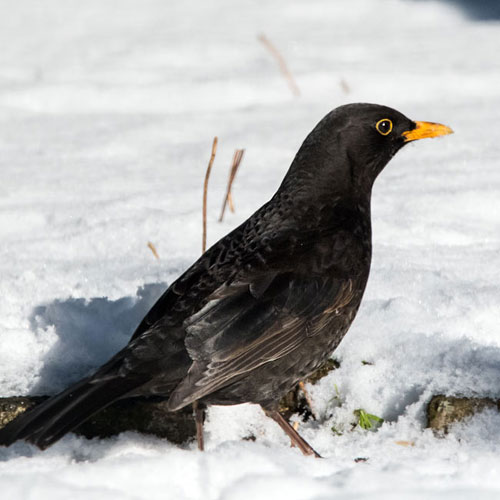 |
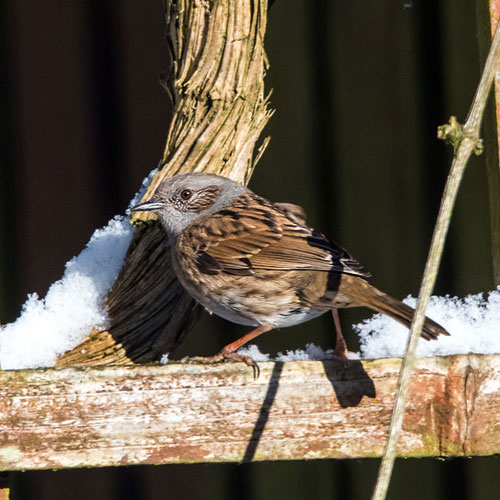 |
| Lesser
Black-backed Gull |
Robin |
 |
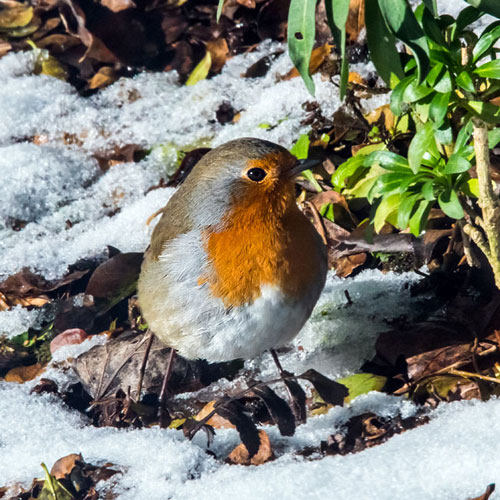 |
| Robin |
Robin |
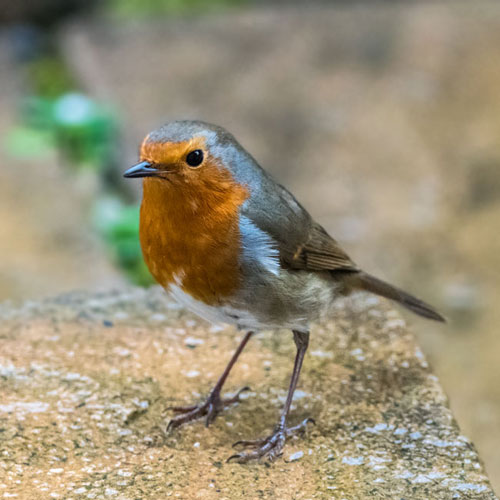 |
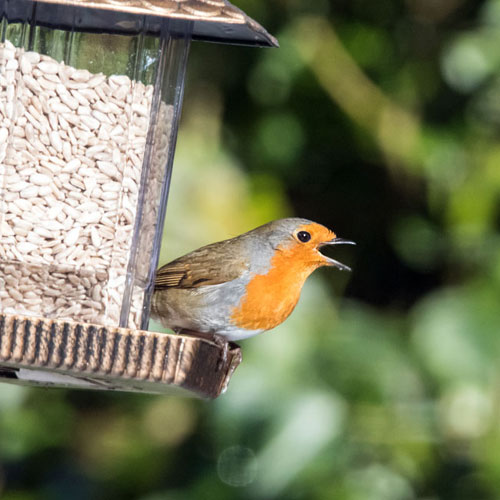 |
FUNGI
| Artist's
Fungus |
Scarlet
Elf Cup |
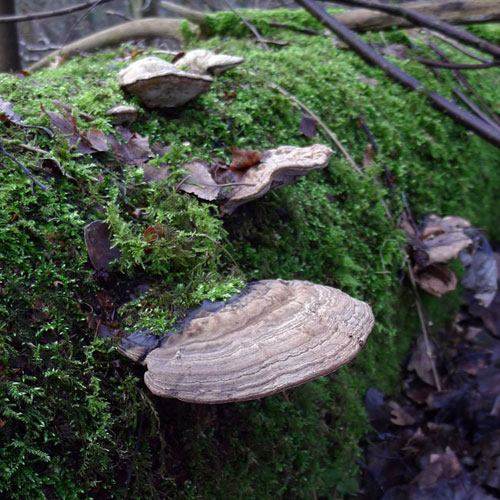 |
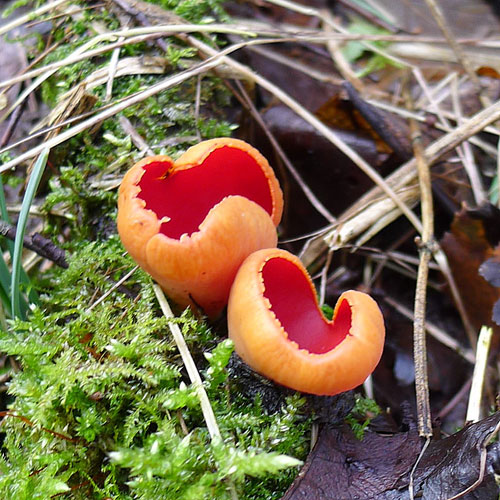 |
| Velvet
Shank |
Velvet
Shank |
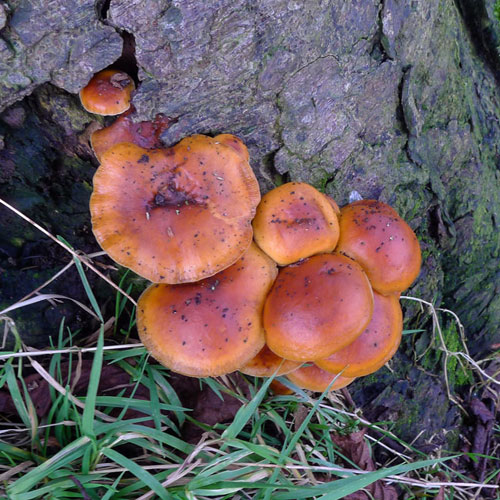 |
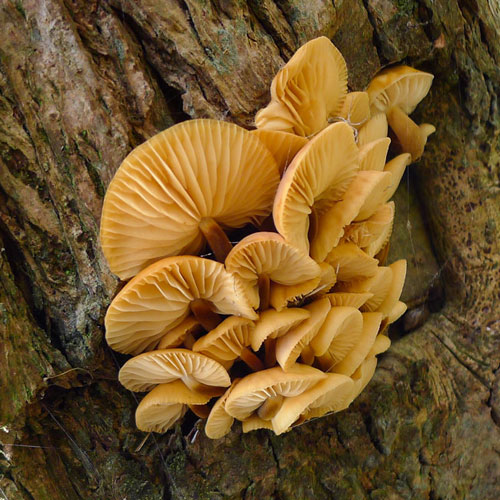 |
ON
THE BRANCHES
| Male
Blackbird |
Blue Tit |
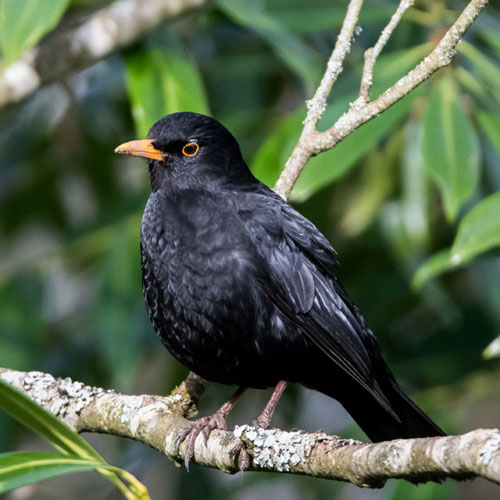 |
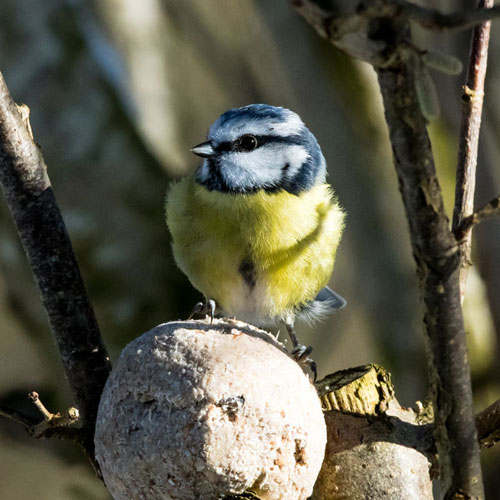 |
| Bullfinch |
Goldcrest |
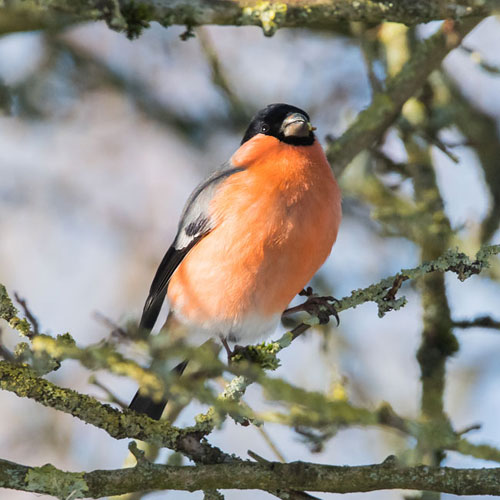 |
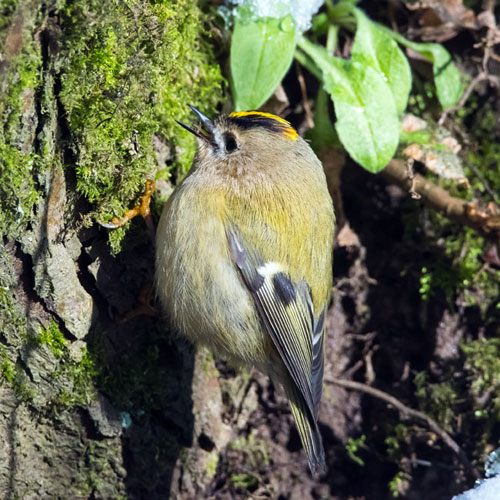 |
| Goldfinch |
Great
Tit |
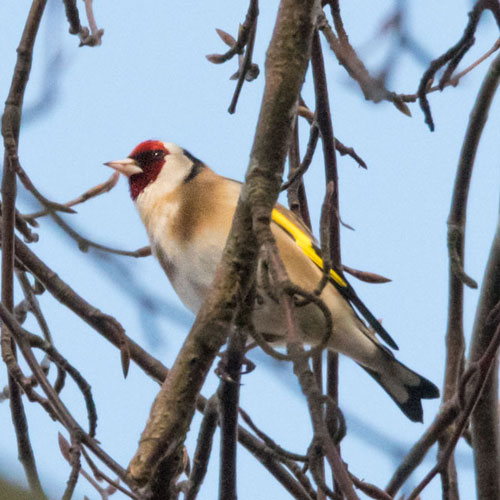 |
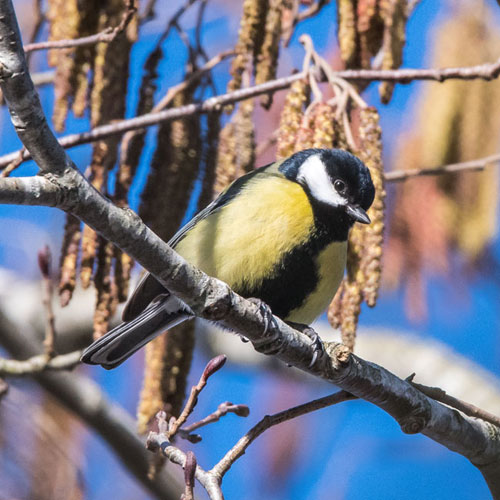 |
| Kestrel |
Kingfisher |
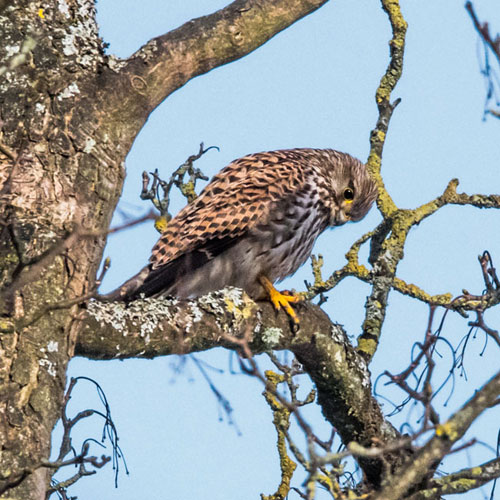 |
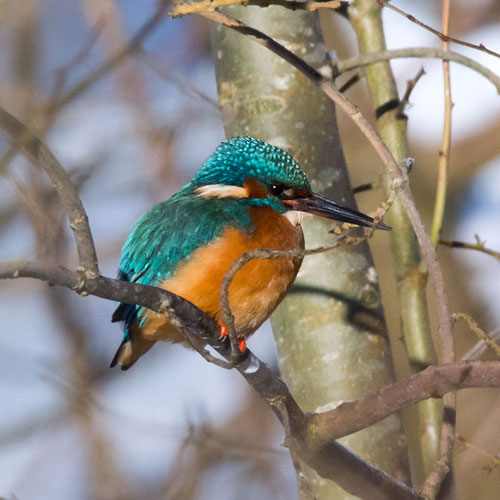 |
| Nuthatch |
Wren |
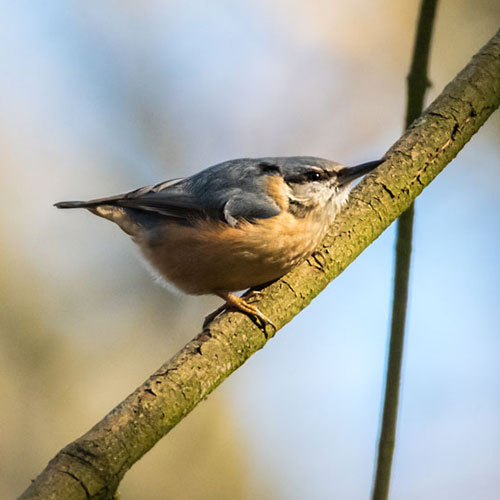 |
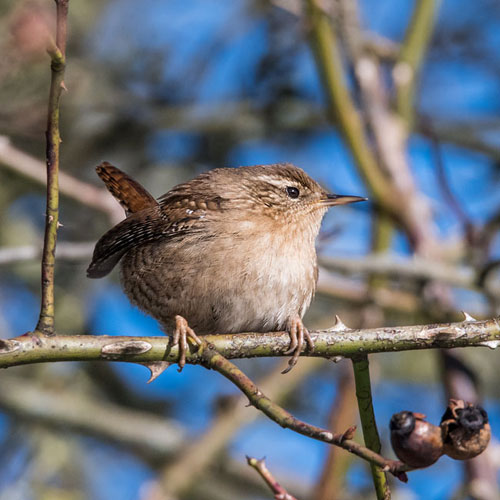 |
FERAL
PIGEONS
Back
To Top
|

